Malevich athletes. Directions of abstract painting Suprematism - abstract
Fully lithographed edition. 22x18 cm. Most of the 34 drawings are arranged in pairs on a double folding sheet. Of the 14 known specimens, 11 are located abroad. The greatest rarity, perhaps one of the most expensive Russian publications!
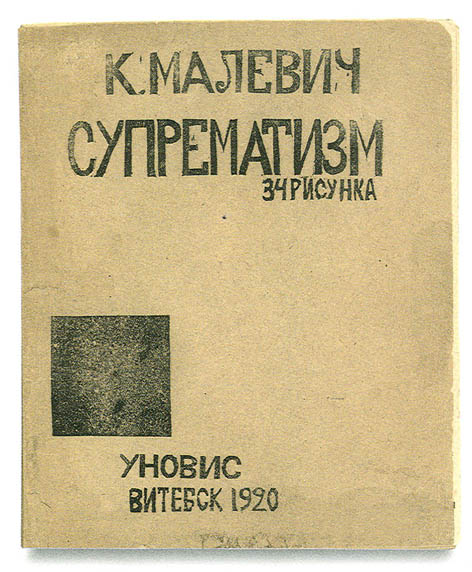
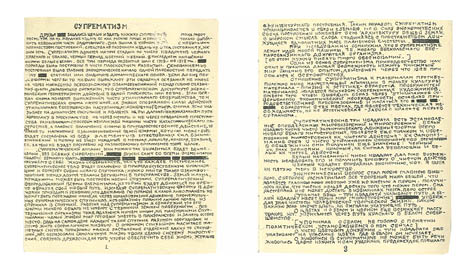
 Suprematism (from lat. supremus - the highest) - a direction in avant-garde art, founded in the 1st half of the 1910s. K. S. Malevich. Being a kind of abstract art, Suprematism was expressed in combinations of multi-colored planes of the simplest geometric outlines (in the geometric forms of a straight line, square, circle and rectangle). The combination of multi-colored and different-sized geometric figures forms balanced asymmetric Suprematist compositions permeated with internal movement. At the initial stage, this term, going back to the Latin root suprem, meant dominance, the superiority of color over all other properties of painting. In non-objective canvases, paint, according to K. S. Malevich, was for the first time freed from an auxiliary role, from serving other purposes - Suprematist paintings became the first step of “pure creativity”, that is, an act that equalized the creative power of man and Nature (God). Probably, this, and not the lack of an equipped printing base at the Vitebsk Art School, explains the lithographed nature of two of Malevich's most famous manifestos - "On New Systems in Art" and "Suprematism". Both of them have the character of original textbooks, since they were intended for students of the Vitebsk art workshops, and in this regard, they should be considered as two parts of one course. The first of them provides a detailed aesthetic justification for new artistic movements, the second reveals the nature of Suprematism and outlines the ways for its further development. Of course, the statement about the "educational" nature of these works cannot be taken literally. If they are "teaching aids", then in a very specific sense, close to the one that we usually put in the designation of a religious text as a "textbook of life." Efros's comparison with prophetic writings can be equally applied to them, it is enough to read the following words of Malevich: ...transforming the world, I go to my transformation and, perhaps, on the last day of my reorganization, I will move into a new form, leaving my current image in the fading green animal world. Although both of these books already belong to the next, post-futuristic period in the development of the avant-garde, it is impossible to do without them in our study. For it was they who marked the extreme point in that movement towards the merging of the artistic and the "propaganda" that distinguished the development of Russian futurism. For Malevich, in his own words, it was a time when "brushes are moving further and further away" from him. After showing a series of "white" canvases at a solo exhibition in 1919, which completed the four-year period of development of pictorial Suprematism, the artist faced the fact of exhaustion. artistic means. This state of crisis was captured in one of Malevich's most dramatic texts - in his manifesto "Suprematism", written for the catalog of the exhibition "Non-Objective Creativity and Suprematism".
Suprematism (from lat. supremus - the highest) - a direction in avant-garde art, founded in the 1st half of the 1910s. K. S. Malevich. Being a kind of abstract art, Suprematism was expressed in combinations of multi-colored planes of the simplest geometric outlines (in the geometric forms of a straight line, square, circle and rectangle). The combination of multi-colored and different-sized geometric figures forms balanced asymmetric Suprematist compositions permeated with internal movement. At the initial stage, this term, going back to the Latin root suprem, meant dominance, the superiority of color over all other properties of painting. In non-objective canvases, paint, according to K. S. Malevich, was for the first time freed from an auxiliary role, from serving other purposes - Suprematist paintings became the first step of “pure creativity”, that is, an act that equalized the creative power of man and Nature (God). Probably, this, and not the lack of an equipped printing base at the Vitebsk Art School, explains the lithographed nature of two of Malevich's most famous manifestos - "On New Systems in Art" and "Suprematism". Both of them have the character of original textbooks, since they were intended for students of the Vitebsk art workshops, and in this regard, they should be considered as two parts of one course. The first of them provides a detailed aesthetic justification for new artistic movements, the second reveals the nature of Suprematism and outlines the ways for its further development. Of course, the statement about the "educational" nature of these works cannot be taken literally. If they are "teaching aids", then in a very specific sense, close to the one that we usually put in the designation of a religious text as a "textbook of life." Efros's comparison with prophetic writings can be equally applied to them, it is enough to read the following words of Malevich: ...transforming the world, I go to my transformation and, perhaps, on the last day of my reorganization, I will move into a new form, leaving my current image in the fading green animal world. Although both of these books already belong to the next, post-futuristic period in the development of the avant-garde, it is impossible to do without them in our study. For it was they who marked the extreme point in that movement towards the merging of the artistic and the "propaganda" that distinguished the development of Russian futurism. For Malevich, in his own words, it was a time when "brushes are moving further and further away" from him. After showing a series of "white" canvases at a solo exhibition in 1919, which completed the four-year period of development of pictorial Suprematism, the artist faced the fact of exhaustion. artistic means. This state of crisis was captured in one of Malevich's most dramatic texts - in his manifesto "Suprematism", written for the catalog of the exhibition "Non-Objective Creativity and Suprematism".
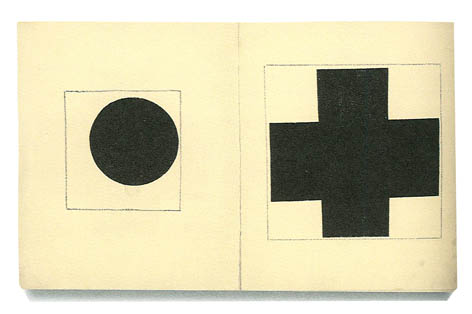
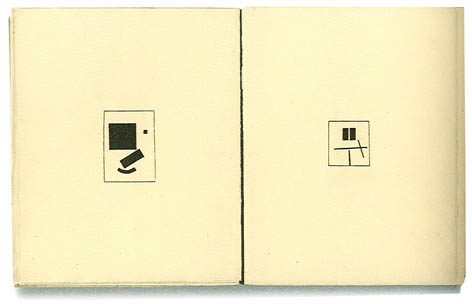
The feeling of the grandeur of the revolution he made, which excludes any possibility of returning to the world of traditional aesthetic ideas - this is perhaps the main thing that determines the content of this text. In it, the artist tries to comprehend the significance of his breakthrough. The "white free abyss", which opened up to the gaze of the artist, is realized as "the true real representation of infinity". The attraction of this abyss turns out to be no less, if not stronger, for him than the attraction of the Black Square. In the text, the desire to "stand on the edge" of the abyss sometimes outweighs the desire to figure out what's next? However, already here Malevich comes to the conclusion that Suprematism as a system is a form of manifestation of the creative will, capable of "through Suprematist philosophical color thinking ... to bring out the rationale for new phenomena." Conceptually, this discovery is extremely significant, marking the end of traditional forms. visual arts. “Painting in Suprematism is out of the question,” Malevich declared a year later in the introductory text to the album “Suprematism,” “painting has long been outdated and the artist himself is a prejudice of the past.” The further path of development of art now lies in the realm of a pure mental act. “It turned out, as it were,” the artist remarks, “that a brush cannot get what a pen can. It is disheveled and cannot reach in the convolutions of the brain, the pen is sharper.”

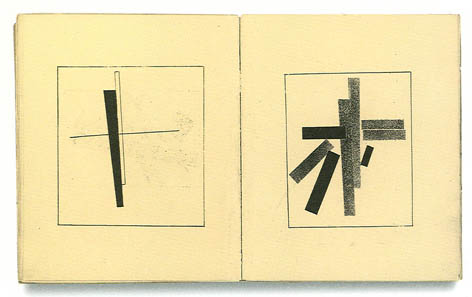
In these often quoted words, those tense relationships between the "pen" and the "brush" that underlay the manifestation activity of the Russian futurists manifested themselves with the utmost clarity. Malevich was the first to break the delicate balance that existed between them, giving a clear preference to "pen". The substantiation of world-building as a "pure action", to which he came in "Suprematism", is already beyond the scope of the futuristic movement proper, giving impetus to the further development of avant-garde art. Suprematism has become one of the central phenomena of the Russian avant-garde. Since 1915, when the first abstract works by Malevich were exhibited, including Black Square, such artists as Olga Rozanova, Lyubov Popova, Ivan Klyun, Nadezhda Udaltsova, Alexandra Ekster, Nikolai Suetin, Ivan Puni, Nina Genke, Alexander Drevin, Alexander Rodchenko and many others. In 1919, Malevich and his students created the UNOVIS group (Approvers of the New Art), which developed the ideas of Suprematism. In the future, even in the conditions of persecution of avant-garde art in the USSR, these ideas were embodied in architecture, design, and scenography. With the onset of the 20th century, grandiose processes of the birth of a new era, equal in significance to the Renaissance, took place in art with increasing intensity. Then there was a revolutionary discovery of reality. The ideas of "cathedral art", cultivated by the symbolists, were specifically refracted among the reforming artists who rejected symbolism. A new attempt to broadly unite leftist painters was made at the First Futurist Exhibition of Paintings "Tram B", which opened in March 1915 in Petrograd. At the exhibition Tram V, Malevich presented sixteen works: among them are abstruse cubo-futuristic canvases Lady at a billboard pole, Lady in a tram, Sewing machine. In the Englishman in Moscow and the Aviator, with their outlandish, mysterious images, incomprehensible phrases, letters, numbers, echoes of the December performances sounded latently, as well as in the Portrait of M.V. Matyushin, composer of the opera Victory over the Sun.
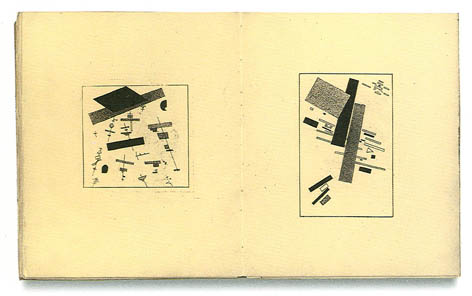

Against numbers 21-25, which ended the list of Malevich's works in the catalog, it was defiantly marked: "The content of the paintings is unknown to the author." Perhaps a painting was hidden among them. modern name Composition with Mona Lisa. The birth of Suprematism from Malevich's illogical canvases came out with the greatest persuasiveness precisely in it. There is already everything here that in a second will become Suprematism: white space-plane with incomprehensible depth, geometric figures of regular outlines and local coloring. Two key phrases, like the inscriptions-signals of a silent movie, come to the fore in the Composition with the Mona Lisa. Twice issued "Partial Eclipse"; a newspaper clipping with a fragment "the apartment is being transferred" is supplemented by collages with one word - "in Moscow" (old spelling) and a mirror inverted "Petrograd". " Full eclipse" happened in his historical Black Square on a white background (1915), where the real "victory over the Sun" was carried out: it, as a natural phenomenon, was replaced, supplanted by a co-natural phenomenon, sovereign and natural - the square plane completely eclipsed, obscured all images. Revelation overtook Malevich while working on the second (never implemented) edition of the brochure Victory over the Sun. Preparing drawings in May 1915, he took the last step on the path to non-objectivity. The weight of this most radical turning point in his life, he realized immediately and In a letter to Matyushin, speaking about one of the sketches, the artist wrote: "This drawing will have great importance in painting. What was done unconsciously is now yielding extraordinary results. "The newborn direction remained without a name for some time, but by the end of the summer a name appeared. "Suprematism" became the most famous among them. Malevich wrote the first brochure "From Cubism to Suprematism". New pictorial realism This booklet-manifesto, published by a faithful friend Matyushin, was distributed at the vernissage of the Last Futuristic Exhibition of Paintings "0.10" (zero-ten), which opened on December 17, 1915 in the premises of the Art Bureau of Nadezhda Dobychina.
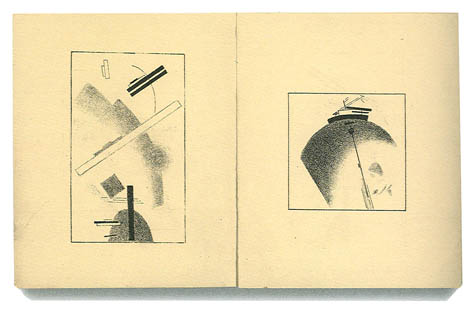
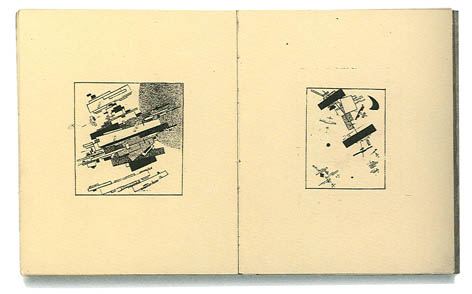
Malevich was not entirely in vain worried about his invention. His comrades vehemently opposed declaring Suprematism the successor of Futurism and uniting under its banner. They explained their rejection by the fact that they were not yet ready to unconditionally accept a new direction. Malevich was not allowed to call his paintings "Suprematism" either in the catalog or in the exhibition, and he had to hand-paint posters with the name Suprematism of Painting literally an hour before the opening day and hang them up without permission next to his works. In the "red corner" of the hall, he erected the Black Square, which overshadowed the exposition of 39 paintings. Those of them that have survived to this day have become high classics of the 20th century. The black square seems to have absorbed all the forms and all the colors of the world, reducing them to a plastic formula dominated by the poles of black (complete absence of color and light) and white (simultaneous presence of all colors and light). Emphasized simple geometric form-sign, not linked either associatively, or plastically, or ideologically with any image, object, concept that already existed in the world before it, testified to the absolute freedom of its creator. The black square marked the pure act of creation carried out by the demiurge artist. "New realism" Malevich called his art, which he considered a step in the history of world artistic creativity. The background of Suprematist compositions is always a kind of white environment - its depth, its capacity are elusive, indefinable, but clear.

The unusual space of pictorial Suprematism, as the artist himself and many researchers of his work have said, has the closest analogue to the mystical space of Russian icons, which is not subject to ordinary physical laws. But Suprematist compositions, unlike icons, do not represent anyone or anything, they - the product of free creative will - testify only to their own miracle: "The hung plane of pictorial color on a sheet of white canvas gives directly to our consciousness a strong sense of space. a desert where you creatively feel the points of the universe all around you," the painter wrote. Incorporeal geometric elements hover in a colorless, weightless cosmic dimension, representing pure speculation, manifested with one's own eyes. The white background of Suprematist paintings, a spokesman for spatial relativity, is both planes and bottomless, and in both directions, both towards the viewer and away from the viewer (the reverse perspective of the icons revealed infinity in only one direction). Invented direction - regular geometric shapes, written in pure local colors and immersed in a kind of transcendental "white abyss", where the laws of dynamics and statics dominate - Malevich gave the name "Suprematism".
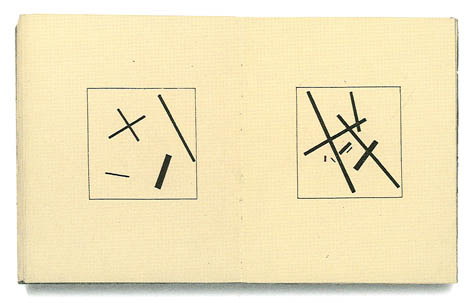
The term he composed went back to the Latin root "suprem", which formed the word "suprematia" in the native language of the artist, Polish, which in translation meant "superiority", "dominance", "dominance". At the first stage of the existence of a new art system With this word, Malevich sought to fix the primacy, the dominance of color over all other components of painting. The canvases of geometric abstractism presented at the exhibition 0.10 had complex, detailed names - and not only because Malevich was not allowed to call them "Suprematism". I will list some of them: Picturesque realism of a football player - Colorful masses in the fourth dimension. Picturesque realism of a boy with a knapsack - Colorful masses in the fourth dimension. Picturesque realism of a peasant woman in 2 dimensions (this was the original full name of the Red Square), Self-portrait in 2 dimensions. Lady. Colorful masses in the 4th and 2nd dimensions, Painterly realism of colorful masses in 2 dimensions. Persistent indications of spatial dimensions - two -, four-dimensional - speak of his close interest in ideas " fourth dimension". Actually Suprematism was divided into three stages, three periods: "Suprematism in its historical development had three stages of black, color and white," the artist wrote in the book Suprematism. 34 drawings. The black stage also began with three forms - a square, a cross, a circle. Malevich defined the black square as "zero forms", the basic element of the world and being. The black square was the first figure, the initial element of the new "realistic" creativity.
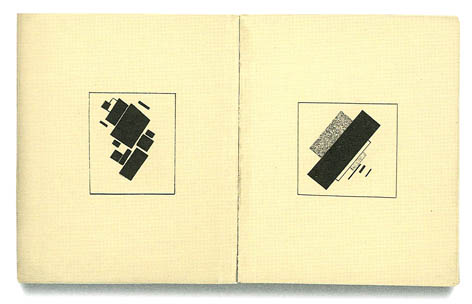
Thus, Black Square. The Black Cross, the Black Circle were the "three pillars" on which the system of Suprematism in painting was based; their inherent metaphysical meaning in many respects surpassed their visible material embodiment. In a number of Suprematist works, black primary figures had a programmatic significance that formed the basis of a clearly built plastic system. These three paintings, which appeared no earlier than 1915, Malevich always dated 1913 - the year of staging Victory over the Sun, which served as the starting point for him in the emergence of Suprematism. At the fifth exhibition of the "Jack of Diamonds" in November 1916 in Moscow, the artist showed sixty Suprematist paintings, numbered from first to last (now it is rather difficult to restore the sequence of all sixty works, both because of losses and for technical reasons, not always attentive attitude in museums to the inscriptions on the backs). The Black Square was exhibited under the first number, then the Black Cross, under the third number - the Black Circle. All sixty exhibited paintings belonged to the first two stages of Suprematism. The color period also began with a square - its red color served, according to Malevich, as a sign of color in general. The last canvases of the color stage were distinguished by their multi-figure, whimsical organization, the most complex relationships of geometric elements - they seemed to be held together by an unknown powerful attraction. Suprematism reached its last stage in 1918. Malevich was a courageous artist, going to the end along the chosen path: at the third stage of Suprematism, color also left him. In the middle of 1918, canvases "white on white" appeared, where white forms seemed to melt in the bottomless whiteness. After the October Revolution, Malevich continued his extensive activities - together with Tatlin and other left-wing artists, he held a number of posts in the official bodies of the People's Commissariat of Education. He was especially concerned about the development of the museum business in Russia; he actively participated in museum construction, developing the concept of a new type of museum, where the works of avant-garde artists were to be presented. Such centers called "museum of pictorial culture", "museum artistic culture"were opened in both capitals and some provincial cities. In the autumn of 1918, Malevich's pedagogical work began, which later played a very important role in his theoretical work. He was listed as a master in one of the classes of the Petrograd Free Workshops, and at the end of 1918 he moved to Moscow. In In July 1919, Malevich wrote his first major theoretical work, On New Systems in Art, to study at Moscow's Free State Workshops. growing everyday difficulties - the artist's wife was expecting a child, the family lived near Moscow in a cold, unheated house - forced him to accept an invitation to move to the province.From the beginning of 1919, the People's Art School, organized and led by Marc Chagall (1887 - 1985), worked in the provincial city of Vitebsk.

The teacher of the Vitebsk school, architect and graphic artist Lazar Lissitzky (1890 - 1941), the future famous designer, during a business trip to Moscow convinced Malevich of the necessity and benefits of moving. Chagall fully supported Lissitzky's initiative and provided the newly arrived professor with a workshop at the school. The publication of the book "On New Systems in Art" was the first fruit of Kazimir Malevich's life in Vitebsk. Its publication seemed to simulate the subsequent relationship of the great initiator with the newly converted adherents: the text he created, concepts, ideas were framed, implemented, replicated by students and followers. The release of the theoretical work served as a kind of tuning fork for all the Vitebsk years of Malevich, dedicated to the creation of philosophical, literary works. In a letter to his long-term friend and colleague, M.V. Matyushin (1861 - 1934), sent at the beginning of 1920, the artist stated: “My book is one lecture. It is written down as I said and printed. There was a certain contradiction: at the end of the main text was the date "July 15, 1919", indicating the completion of the manuscript before arriving in Vitebsk. However, Malevich did give a lecture on November 17 in a Vitebsk auditorium; obviously, the statements are true, both about the publication of the recorded lecture, and about the finished white manuscript. The book "On New Systems in Art" became the forerunner of the subsequent "Suprematism" and is unique in every sense. First of all, its polysyllabic genre is unusual: firstly, it is a theoretical treatise; second, illustrated tutorial; thirdly, a set of prescriptions and postulates (which is Establishment A) and, finally, artistically, Malevich's book was a cycle of stitched lithographs, anticipating the easel compositions of "calligraphers" and "type designers" of the second half of the 20th century, based on the expressiveness of letter rows. The publication "On New Systems ..." technologically was a paperback brochure printed in a lithographic way (sometimes it was called a booklet). It opened and closed with texts executed by Malevich in cursive on a lithographic stone: at the beginning of the book these were epigraphs and an introduction, at the end Establishment A and two postulates placed under the image of a black square. The facsimile reproduction of the leader's own plans and attitudes acquired the meaning of a personal, personal appeal to each reader-follower. After the introduction, on folding sheets were located schematic drawings illustrating the techniques of cubist construction; the “educational-visual” part of the brochure ended with a sketch that sketched Malevich’s shockingly abstruse painting “The Cow and the Violin”. All these drawings-schemes offered to students for assimilation were Malevich's autolithographs. The main place in the brochure was occupied by the treatise "On New Systems in Art". static and speed. Several performers - they were Lissitzky's apprentices, who entered the Artel of Artistic Labor under Witsvomas - transferred Malevich's essay-lecture in block letters to lithographic stones; there were few stones, so the written fragment was replicated, the stone was polished and used for the next passage.
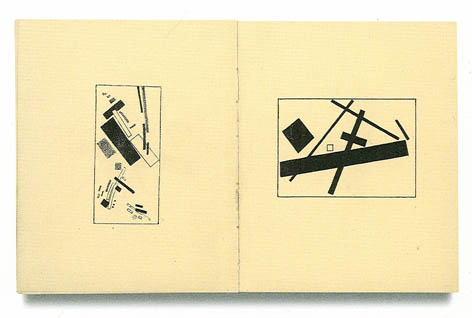
The performers were distinguished by different hand hardness, different dexterity, different visual acuity and different literacy: all these individual properties were forever imprinted in the "cuneiform" - very narrow leading lines made the stripes visually similar to archaic early Eastern writing. Sometimes the dense, weakly divided type "mirror" of the page was diversified by the introduction of decorative icons and marginals, most often of a geometric shape; however, the bars and circles in the lines often masked the mistakes made and noticed. The printed parts were then assembled into a single organism - this work was done by El Lissitzky; he also made the cover using the linocut technique. One sheet with an integral composition formed the front and back sides when folded; it is curious that in the position: in the position of the spread, the composition was “read” from right to left - its significant elements were in that order. The cover was cut last, the author and designer found it necessary to put the names of all parts on it - the front side of the book thus played an additional role of a “table of contents”. The outer epigraph drew attention to itself: "The overthrow of the old world will be drawn on your palms."

Placed at the top on the most significant, striking place of the cover, anticipating the name and surname of the author, he made the whole book a “text”, opening it. The abundance of information, necessary and secondary, gave the external appearance of the brochure, as it seemed at first glance, an unprofessional, amateurish character - however, as El Lissitzky's intention was comprehended, it became clear that he needed an abundance of words: the cover of "On New Systems ..." with its dynamics, moving sharp letter compositions foreshadowed the constructivist techniques of book design. It is especially necessary to highlight the abundance of textual information on the cover - this technique will become widespread in the art of the book much, much later. Malevich's book was a set of fundamental arguments, theses, statements proposed by the leader to new adherents for study and assimilation. The texts inscribed on stone, especially Malevich's handwritten commandments, acquired the rank of some tables of the "new artistic testament". The main visual hero of the book is Black Square, reproduced four times; the frequency of its use testified to the emergence of a new function of the main Suprematist form - the black square turned into an emblem. The transformation of the black square into an emblematic sign must be specially highlighted, as well as the persistent repetition of the slogan "The overthrow of the old world will be drawn on your palms" - this slogan soon acquired the meaning of a motto for members of UNOVIS. An equally remarkable role was played by the line of Malevich's sound-abstruse poem, placed inside before the first epigraph:
"I'm going
U - el - el - st - el - te - ka
My new path.
The leader's poem became, as we will see below, a kind of anthem for Malevich's supporters in Vitebsk. There were still months before the self-determination of UNOVIS, the “new party in art,” as Malevich sometimes called it, but the accumulation of its constituent elements, the formation of its framework, had already begun. Malevich, correcting the first page of the book at the request of Lissitzky, made a significant inscription: “I greet you Lazar Markovich with the release of this booklet, it will follow my path and the beginning of our collective movement, I expect from you clothing structures for those who follow innovators. But build them in such a way: so that they cannot sit up in them for a long time, do not have time to start a petty-bourgeois hustle, do not become obese in its beauty. K. Malevich December 4, 19 Vitebsk. The book "On New Systems in Art" was published in a huge circulation for those times - 1000 copies, and was printed in a handicraft, in fact, way. Concerned about the distribution of the book, Malevich sent a letter to O.K. Gromozova, wife of M.V. Matyushina: “Dear Olga Konstantinovna! My friends published a book "On New Systems in Art", 1,000 copies. lithographically with drawings. It is necessary to distribute it, so we turn to friends so that it falls into the proper hands, we give 200-300 copies to Petrograd, the rest is Moscow-Vitebsk; price 40 rub. We trust the giver of this, Elena Arkadyevna Kabischer, to make money for the book, if it succeeds. We will brochure the book and send it out immediately. Maybe you will leave one shelf for its distribution. I firmly shake your hand. Hi to all my friends, and kiss Misha (Matyushin). K. Malevich. Petrograd, Stremyannaya, not far from the Nikolaevsky railway station, warehouse-commune. Olga Konstantinovna Gromozova warehouse."

The ideas developed in the first Vitebsk book were very dear to Malevich, and therefore, when the opportunity presented itself, he replicated them in another edition. In 1920, the Fine Arts Department of the People's Commissariat for Education in Petrograd published Malevich's book From Cezanne to Suprematism. Critical Essay". The text of the publication consisted of several large fragments of the Vitebsk brochure "From Cezanne to Suprematism", assembled into an independent book. Malevich himself was clearly aware of the onset of a new stage in his biography, the displacement of painting by purely speculative creativity. In a letter to M.O. Gershenzon, sent on November 7, 1919, in the first days after moving from Moscow, he stated: “... all my energy can go to writing pamphlets, now I’ll work diligently in Vitebsk “exile” - my brushes are moving further and further away.” The aspirations of the initiator in the theoretical empyrean paradoxically matched with the expansion of Suprematism in real life, into the "utilitarian world of things". And although at the beginning of this year, in 1919, Malevich called on “comrades of metalworkers and comrades of textile workers” to his Moscow workshop, it was only after moving to Vitebsk that he clearly saw the horizons of practical application that opened up before the system he invented in art. The possibility of introducing Suprematism into reality presented itself immediately. In December 1919, the Vitebsk Committee for Combating Unemployment celebrated its two-year anniversary. The committee was the brainchild of the February bourgeois revolution, although it officially opened a week after the transfer of power to the Bolsheviks. It must be said that the October Revolution somehow went unnoticed in Vitebsk: only in one local newspaper, on the second page, in a tiny newsreel, patter was announced about the events in Petrograd. We decorated the anniversary of the Cabinet in a bright Suprematist way.
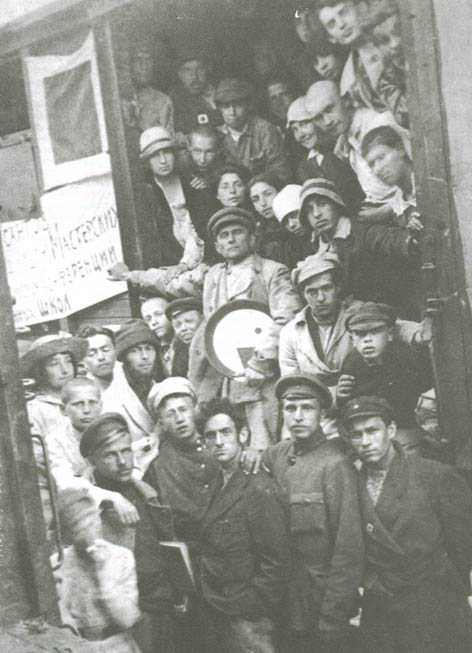
A picture taken at the Vitebsk railway station on Saturday, June 5, 1920, has become one of the most famous photographs of the era. It was accidentally preserved by Lev Yudin and his family. Life, as you know, is sometimes more inventive than the most sophisticated novelist - here she acted as the most insightful artist, creating an unusually expressive portrait of the "Unovis team" on the eve of his finest hour. The photograph was dated according to a note from the Vitebsk newspaper Izvestia dated June 6, 1920: “Artistic excursion. Yesterday, an excursion of 60 students from the Vitebsk Folk Art School, led by their leaders, left for Moscow. The tour will take part in an art conference in Moscow, as well as visit all the museums and see the artistic sights of the capital.” The freight car, in which the Vitebsk people went to Moscow, was decorated according to the project of Suetin - it was decorated with the Black Square, the emblem of Unovis. On the project, under the square, there was the slogan "Long live Unovis!" - in nature, it was replaced by a long banner; according to the fragment visible in the picture, the inscription was restored: "A group of sightseers of the Vitebsk state free art workshops, participants in the All-Russian Conference of art schools." The photographer was filming the scene of the departure from the car, which stood nearby on the tracks, and a continuous “panel” of heads and figures, spreading vertically, something akin to a tiered fresco composition, impeccably centered by the Suprematist tondo in the hands of Malevich. His figure, surrounded by a garland of disciples and followers, seemed to ascend in a “mandorla” from their heads (a striking interpretation of the iconography of the Savior in power in a documentary photograph). The imperiously pointing movement of the UNOVIS leader, by its premeditation and stagedness, also transformed the snapshot into the rank of a historical document - however, the soft touch of Natalia Ivanova, trustingly leaning on Malevich's hand, somehow tamed the authoritarian unambiguity of the gesture. The psychological orchestration of the group portrait is also striking - a gamut of heterogeneous feelings was drawn on the faces of the UNOVIS members who were going to conquer Moscow. Harshly inspired dark-faced Malevich; warlike, disheveled Lazar Khidekel; sad, aloof Lazar Zuperman; cheerful, business-like Ivan Gavris (it seems that under his arm he has the Unovis almanac) - and only the indestructible cheerfulness of Vera Ermolaeva and the naive little apprentice who looked out from under the leader’s hand, brightened with a smile the tense seriousness of Unovis. In the picture, in addition to Malevich, all the leaders of the United Painting Audience are captured: Nina Kogan, Lazar Lissitzky, Vera Ermolaeva; apprentices of the school - Moses Veksler, Moses Kunin, Lazar Khidekel, Yakov Abarbanel, Ivan Gavris, Iosif Baitin, Efim Royak, Ilya Chashnik, Ephraim Volkhonsky, Fanya Belostotskaya, Natalya Ivanova, Lev Yudin, Khaim Zeldin, Evgenia Magaril, Lev Tsiperson, Isaak Beskin ; The names of the rest have not yet been established. Lissitzky and Baitin, leaning on the shoulders of Gavris, have the UNOVIS emblem attached to the cuff of their sleeves; Veksler in the front row and Zeldin in the back of the carriage have a black square pinned on their chests. The round-shaped "suprema" (the word of the Unovists) in the hands of Malevich is not a dish, as it might seem at first glance. Its author, obviously, was Chashnik, who was distinguished by inexhaustible inventiveness and the ability to introduce Suprematist principles into other than easel painting, types of art (this was something akin to the similar skill of Nina Kogan, who came up with either a Suprematist ballet or a Suprematist mobile). The white disk with geometric appliqué elements superimposed on it was taken into a freshly painted concave frame (Malevich had a pad under his palm so as not to erase the paint). Tondo was undoubtedly one of the exhibits of the exhibition that Unovis was taking to Moscow; his round form in the photograph of 1920 - an extremely important evidence of the unexpected plastic experiments of the Unovis in the very early stages of the group's existence. Here it would be appropriate to say that Chashnik, who had a good command of the craft skills of working with metal, was famous at school for original compositions known to us only from verbal descriptions: they were a “picture” with planar geometric elements reinforced with metal pins at different heights from the surface. , - a kind of layered spatial-planar composition was obtained. This plastic idea, dating back to Malevich's Suprematism, many, many years after Chashnik's death, will be expressed in his own way by the famous Swiss artist Jean Tengueli in the reliefs of the 1950s called Meta-Malevich ... Malevich, having arrived in Vitebsk at the very beginning of November 1919, did not expect that he would stay here for a long time. The birth of Unovis changed his plans - the upbringing of fellow believers now came to the fore. In letters to David Shterenberg, head of the Fine Arts Department of the Narkompros, Malevich explained: “I live in Vitebsk not for the sake of improving nutrition, but for the sake of working in the province, where Moscow luminaries are not particularly willing to go to give an answer to the demanding generation.” At the beginning of January 1921, this provision was developed in an extensive letter to the same addressee: “Having left Moscow for the mountains. I left Vitebsk to benefit from all my knowledge and experience. Vitebsk workshops not only did not freeze like other cities in the province, but took on a progressive form of development, despite the most difficult conditions, everyone together overcome obstacles go further and further along the road of the new science of painting, I work all day, as can be confirmed by all the apprentices in the amount hundred people." The Vitebsk apprentices were not the first group of supporters to form around Malevich; Since the invention of Suprematism, circles of followers have constantly formed around the leader. However, it was in Vitebsk that Malevich's organizational and artistic-mentoring activities, based on the foundation laid in Petrograd and Moscow, acquired stable, developed forms. Malevich arrived in Vitebsk on the eve of an important event in his life, the first monographic exhibition. It was prepared as part of state exhibitions organized in the early Soviet years by the All-Russian Central Exhibition Bureau of the People's Commissariat for Education. Malevich's paintings have already been taken to the former salon of K. Mikhailova on Bolshaya Dmitrovka, 11.
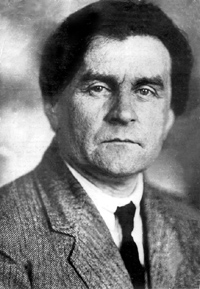 Indirect evidence suggests that the exposition was already thought out by the author. On November 7, 1919, he wrote to M.O. Gershenzon about the opening of the exhibition as a matter already decided: “By the way, my exhibition must open in a week on Bolshaya Dmitrovka, Mikhailova’s salon, Stoleshnikov’s corner, stop by; all things could not be collected, but there is impressionism and beyond. I would like to know your opinion about it." Researchers for many years did not know where Malevich's exhibition eventually took place (in some sources, the Moscow Museum of Artistic Culture was indicated); There were disagreements about the time of its opening. An invitation card to the vernissage, preserved in the archive of N.I. Khardzhiev, unambiguously determines the time and place of Malevich's first solo exhibition: it was opened on March 25, 1920 in the former salon of Mikhailova, Bolshaya Dmitrovka, 11. The exhibition, registered as the 16th State Exhibition of the All-Russian Central Exhibition Center, is usually called “Kazimir Malevich. His path from impressionism to suprematism. To date, no accurate documentary evidence of her has been found; there was no catalog for the exhibition, although 153 works are known to have been presented. From the first exhibition of Malevich there were photographs of the exposition; unfortunately, the impressionist works were not included in the lens. Of the two reviews by A.M. Efros and A.A. Sidorov, you can only draw general ideas. Apparently, the paintings remained in the exhibition halls at the beginning of June 1920, when Malevich, together with the apprentices of the school, came to the All-Russian Conference of Art Teachers and Students (the next exhibition of the VTsVB was organized only in the summer-autumn of 1920 and its location is not indicated in the sources. Apprentice of the Vitebsk School M. M. Lerman in conversations more than once returned to the monographic exhibition of Malevich, which he happened to see with my own eyes . Due to the importance of these testimonies, we will cite them in the form in which they were recorded at one time: “We had two heating trucks; I was in 1919 or 1920 (it was summer) and 1921 on excursions in Moscow, I lived on Sadovo-Spasskaya, in some kind of hostel. The first tour was very interesting, we were at the Malevich exhibition. Enfilade of rooms - Cezanne works, cubism, cubo-futurism, color suprematism, black and white suprematism, a black square on a white background and a white square on a white background, and in the last room - empty white stretchers"; “When we arrived on an excursion to Moscow, we were starving ... At the exhibition, one shouted: “Peace be on your ashes, Casimir””; “The exhibition began in 1920 with Cezanne's works - the workers dragged heavy bags (“Cezanne has everything heavy,” said Malevich, “an iron apple”). In the beginning there were impressionistic things. Cubism, cubo-futurism, works of a "Deren" nature. Colored suprematism, a black square, and then empty stretchers walked, they laughed at it. "Peace be upon your ashes, Kazimir Malevich," someone shouted from the podium. I wore a black square, one approached me and asked: "Are you studying with Malevich?" It was, it seems, Mayakovsky”; “The first floor is a suite of rooms, an exhibition of Malevich. Malevich joked, Conspired that the “end of art” had come>. The facts reported by Lerman are verifiable; information about two excursions - summer and winter - coincides with documentary evidence of Unovis' trips to Moscow in the 1920 summer (June) and 1921 winter (December). The works with workers dragging sacks mentioned by the narrator correlate with the plots of large gouaches by Malevich Man with a sack (1911, Stedelijk Museum, Amsterdam) and Carrying earth (1911, private collection abroad). Deserves trust and a message about a meeting with Mayakovsky; Mayakovsky, as already mentioned, spoke from the rostrum of the All-Russian Conference on June 8, on the day when Malevich and the UNOVIS members appeared there. Almost all Vitebsk sightseers for the first time in their lives visited the Tretyakov Gallery, the collection of I.A. Morozov and S.I. Schukin; accompanied them, giving explanations, Malevich himself. Sixteen-year-old Semyon Bychenok and Samuil Vikhansky, students of Pan's class at the People's School, were shocked to tears by the negative attitude of the stern Suprematist towards Repin, whom he proposed to "throw off the ship of modernity." These young men, however, Malevich did not convince, they forever remained faithful to Pan and realism. Returning to the artistic concept of Malevich's first solo exhibition, it should be said that its boldness and novelty passed the attention of contemporaries. The exit to the "white desert" for Malevich was the logical conclusion of the picturesque path; in December 1920, the lines appeared: “There can be no question of painting in Suprematism; painting has long been outlived and the artist himself is a prejudice of the past.” Painting really left the artist for many years - to return in a completely different guise in difficult times for him. Empty canvases - the screen on which each viewer could project their creative potential - appeared in world art decades after Malevich's death; his priority in the field of conceptual creativity turned out to be firmly forgotten, unclaimed, unknown. Some evidence suggests that during the last public performance of Unovis, which took place as part of the “Exhibition of Paintings by Petrograd Artists of All Trends. 1918-1923”, the same exposition concept was repeated - an empty canvas was present in the collective exhibit of the Approvers of the New Art. Occupying the official position of the head of the workshop of the People's Art School, Malevich proposed as a basis a program developed for the Moscow State Art Museum. As already mentioned, the completeness and capacity of Malevich's program could ensure the activity of not one class, but the whole educational institution. This is what happened in Vitebsk - Malevich's plan, having become the basis for the program of the Unovis Unified Painting Audience, was implemented with the help of a "group of senior cubists", which included Lissitzky, Ermolaeva and Kogan. The teaching style of Malevich himself in Vitebsk acquired a completely different character compared to Moscow. Starting from the first days of meetings, the center of gravity shifted to verbal forms unusual in art education: lectures, reports and interviews became the main genre in the communication of the mentor with the students. In the archives of the Vitebsk school, documents have been preserved that recorded the extraordinary intensity of Malevich's lecture activity: the payroll for many hours of lectures appeared in the statements. Vitebsk diaries of L.A. Yudin; messages about Malevich's speeches were placed in the press, posters were specially created for them. A visual representation of the atmosphere and the nature of these quite academic studies can be obtained from the famous photograph of Unovis, dated to the autumn of 1921: Malevich, taking his usual place at the blackboard, draws an explanatory diagram with chalk.
Indirect evidence suggests that the exposition was already thought out by the author. On November 7, 1919, he wrote to M.O. Gershenzon about the opening of the exhibition as a matter already decided: “By the way, my exhibition must open in a week on Bolshaya Dmitrovka, Mikhailova’s salon, Stoleshnikov’s corner, stop by; all things could not be collected, but there is impressionism and beyond. I would like to know your opinion about it." Researchers for many years did not know where Malevich's exhibition eventually took place (in some sources, the Moscow Museum of Artistic Culture was indicated); There were disagreements about the time of its opening. An invitation card to the vernissage, preserved in the archive of N.I. Khardzhiev, unambiguously determines the time and place of Malevich's first solo exhibition: it was opened on March 25, 1920 in the former salon of Mikhailova, Bolshaya Dmitrovka, 11. The exhibition, registered as the 16th State Exhibition of the All-Russian Central Exhibition Center, is usually called “Kazimir Malevich. His path from impressionism to suprematism. To date, no accurate documentary evidence of her has been found; there was no catalog for the exhibition, although 153 works are known to have been presented. From the first exhibition of Malevich there were photographs of the exposition; unfortunately, the impressionist works were not included in the lens. Of the two reviews by A.M. Efros and A.A. Sidorov, you can only draw general ideas. Apparently, the paintings remained in the exhibition halls at the beginning of June 1920, when Malevich, together with the apprentices of the school, came to the All-Russian Conference of Art Teachers and Students (the next exhibition of the VTsVB was organized only in the summer-autumn of 1920 and its location is not indicated in the sources. Apprentice of the Vitebsk School M. M. Lerman in conversations more than once returned to the monographic exhibition of Malevich, which he happened to see with my own eyes . Due to the importance of these testimonies, we will cite them in the form in which they were recorded at one time: “We had two heating trucks; I was in 1919 or 1920 (it was summer) and 1921 on excursions in Moscow, I lived on Sadovo-Spasskaya, in some kind of hostel. The first tour was very interesting, we were at the Malevich exhibition. Enfilade of rooms - Cezanne works, cubism, cubo-futurism, color suprematism, black and white suprematism, a black square on a white background and a white square on a white background, and in the last room - empty white stretchers"; “When we arrived on an excursion to Moscow, we were starving ... At the exhibition, one shouted: “Peace be on your ashes, Casimir””; “The exhibition began in 1920 with Cezanne's works - the workers dragged heavy bags (“Cezanne has everything heavy,” said Malevich, “an iron apple”). In the beginning there were impressionistic things. Cubism, cubo-futurism, works of a "Deren" nature. Colored suprematism, a black square, and then empty stretchers walked, they laughed at it. "Peace be upon your ashes, Kazimir Malevich," someone shouted from the podium. I wore a black square, one approached me and asked: "Are you studying with Malevich?" It was, it seems, Mayakovsky”; “The first floor is a suite of rooms, an exhibition of Malevich. Malevich joked, Conspired that the “end of art” had come>. The facts reported by Lerman are verifiable; information about two excursions - summer and winter - coincides with documentary evidence of Unovis' trips to Moscow in the 1920 summer (June) and 1921 winter (December). The works with workers dragging sacks mentioned by the narrator correlate with the plots of large gouaches by Malevich Man with a sack (1911, Stedelijk Museum, Amsterdam) and Carrying earth (1911, private collection abroad). Deserves trust and a message about a meeting with Mayakovsky; Mayakovsky, as already mentioned, spoke from the rostrum of the All-Russian Conference on June 8, on the day when Malevich and the UNOVIS members appeared there. Almost all Vitebsk sightseers for the first time in their lives visited the Tretyakov Gallery, the collection of I.A. Morozov and S.I. Schukin; accompanied them, giving explanations, Malevich himself. Sixteen-year-old Semyon Bychenok and Samuil Vikhansky, students of Pan's class at the People's School, were shocked to tears by the negative attitude of the stern Suprematist towards Repin, whom he proposed to "throw off the ship of modernity." These young men, however, Malevich did not convince, they forever remained faithful to Pan and realism. Returning to the artistic concept of Malevich's first solo exhibition, it should be said that its boldness and novelty passed the attention of contemporaries. The exit to the "white desert" for Malevich was the logical conclusion of the picturesque path; in December 1920, the lines appeared: “There can be no question of painting in Suprematism; painting has long been outlived and the artist himself is a prejudice of the past.” Painting really left the artist for many years - to return in a completely different guise in difficult times for him. Empty canvases - the screen on which each viewer could project their creative potential - appeared in world art decades after Malevich's death; his priority in the field of conceptual creativity turned out to be firmly forgotten, unclaimed, unknown. Some evidence suggests that during the last public performance of Unovis, which took place as part of the “Exhibition of Paintings by Petrograd Artists of All Trends. 1918-1923”, the same exposition concept was repeated - an empty canvas was present in the collective exhibit of the Approvers of the New Art. Occupying the official position of the head of the workshop of the People's Art School, Malevich proposed as a basis a program developed for the Moscow State Art Museum. As already mentioned, the completeness and capacity of Malevich's program could ensure the activity of not one class, but the whole educational institution. This is what happened in Vitebsk - Malevich's plan, having become the basis for the program of the Unovis Unified Painting Audience, was implemented with the help of a "group of senior cubists", which included Lissitzky, Ermolaeva and Kogan. The teaching style of Malevich himself in Vitebsk acquired a completely different character compared to Moscow. Starting from the first days of meetings, the center of gravity shifted to verbal forms unusual in art education: lectures, reports and interviews became the main genre in the communication of the mentor with the students. In the archives of the Vitebsk school, documents have been preserved that recorded the extraordinary intensity of Malevich's lecture activity: the payroll for many hours of lectures appeared in the statements. Vitebsk diaries of L.A. Yudin; messages about Malevich's speeches were placed in the press, posters were specially created for them. A visual representation of the atmosphere and the nature of these quite academic studies can be obtained from the famous photograph of Unovis, dated to the autumn of 1921: Malevich, taking his usual place at the blackboard, draws an explanatory diagram with chalk.

The topics of the reports were closely related to that gigantic work of a theoretical nature that absorbed almost all the time of the great artist in Vitebsk. The path "from cubism to suprematism" was promoted by Malevich and how the road individual development, and as a road for the development of all art in general. In Vitebsk, the artist began to be interested in how the transition from one stage to another, from one painting system to another, is made. Examining the work of apprentices at interviews, performed to solve educational and artistic problems, the mentor tried to identify and explain the motives for this or “painting doing” (such an analysis was very soon called “diagnosing”). In the National School, Malevich received a lot of space for the implementation of the research inclinations of his intellect. The analysis of the work of an individual creative person, the analysis of an integral direction, was based on putting forward a hypothesis, setting up experiments, reconciling the predicted results and experimental data. Using the old canons of science, Malevich gave the humanitarian sphere the character of a sphere of natural science. Both the mentor himself and his followers often resorted to consolidating their observations in graphs, diagrams, tables, widely using peculiar statistical methods accumulation of primary material for theoretical and practical conclusions. The scientific visualization of artistic experiments and experiments was supposed to help reveal the objective laws of the formation of art - such a mindset dominated the aspirations of Unovis in Vitebsk, the Bauhaus in Weimar, Vkhutemas and Inkhuk in Moscow. Malevich, a spontaneous systematist, having streamlined his observations and conclusions, put forward a hypothesis, which then grew into an original theory, the substantiation and proof of which were devoted to the years of life of both the initiator himself and his Vitebsk adherents. Outlining the foundations of the "theory of the surplus element in painting," Malevich specifically emphasized the decisive significance of the Vitebsk years: part of the youth lived in the subconscious, feeling, inexplicable rise to a new problem, freeing themselves from the whole past. The opportunity opened up before me to carry out all sorts of experiments to study the effect of surplus elements on pictorial acceptances. nervous system subjects. For this analysis, I began to adapt the Institute organized in Vitebsk, which made it possible to work in full swing. ” According to Malevich’s theory, the movement from one pictorial trend to another was due to the introduction of specific pathogens, peculiar artistic genes that rebuilt the appearance and image of the “painting body”. In Vitebsk, at an early stage in the formation of the theory, Malevich more readily used the word “additives”, which then transformed into “surpluses”, into “surplus element” - one cannot but see in this definition a certain influence of the popular term of Marxist-Leninist political economy. The People's Art School (Vitebsk State Artistic and Technical Workshops) was transformed into the Vitebsk Artistic and Practical Institute in 1921 - in its work the foundations of scientific and artistic activity were laid for registration, identification, description primary elements, which constituted the "picturesque body" of one direction or another. The purpose of these experiments was subsequently outlined by Malevich: “So, for example, you can collect typical elements of impressionism, expressionism, cezannism, cubism, constructivism, futurism, suprematism (constructivism is the moment of system formation), and make several cartograms from this, find in them a whole system of development of lines and curves, to find the laws of linear and colored structures, to determine the influence on their development of the social life of modern and past eras and to determine their pure culture, to establish textural, structural, and so on. differences." As a result of a carefully scientific work an additional element of one direction or another had to be singled out - Cezannism, according to Malevich, was built on the basis of a “fiber-shaped surplus element”, cubism - a “crescent” one; the surplus element of Suprematism turned out to be a direct, most economical form, a trace of a moving point in space. Graphically significant surplus elements were linked to a certain color range in each direction.
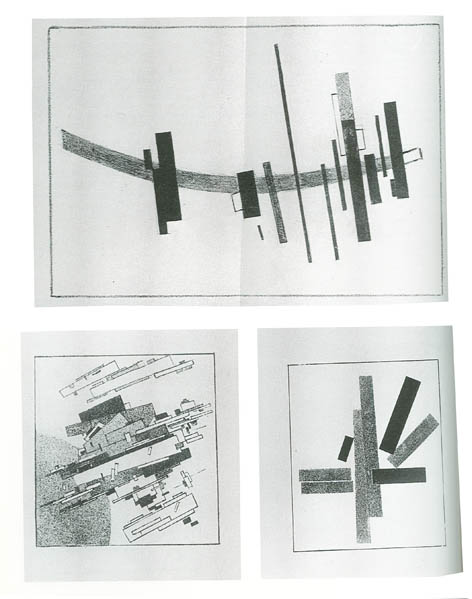
The theoretical understanding of practical experiments, initiated by Malevich, gradually turned into a rule, a law for the most talented of his students in Vitebsk: the creation of a theoretical treatise was a prerequisite for obtaining a diploma from the Artistic and Practical Institute. The Scheme for the Construction of the Vitebsk State Artistic and Technical Workshops, developed and drawn by Chashnik, formulated the goal of education: the emergence of a “complete learned builder”. In full measure, laboratory research to isolate the “surplus element in painting” was launched by Malevich and members of the Vitebsk Unovis after they moved to Petrograd, becoming central to the experimental activities of Ginkhuk. The first assistants of Malevich, even to some extent his co-authors, since Vitebsk times were Ermolaeva and Yudin, who became assistants in the formal theoretical department. It should also be noted that the treatise Introduction to the theory of the surplus element in painting largely described the Vitebsk experiments carried out on “individuals amazed by painting”; It is no coincidence that Malevich dated the treatise to 1923, as if summing up the scientific, artistic and pedagogical experience of his life in Vitebsk. The Vitebsk years were fruitful for the artist in terms of publishing theoretical works: between the first book, On new systems in art, and the last, “God will not be thrown off”, there are “From Cezanne to Suprematism” (Pg., 1920); "Suprematism. 34 drawings” (Vitebsk, 1920); "On the issue of fine arts" (Smolensk, 1921). In addition, treatises On the "I" and the collective, Towards pure action, manifestos Unom and the Declaration were published - all in the Almanac "Unovis No. 1", as well as the article "Unovis" in the Vitebsk magazine "Art" (1921, No. 1). Almost all the texts were tested by Malevich in oral transmission - they formed the basis of his lectures and speeches. Pronunciation, articulation of one's constant thoughts - an explanation to oneself and to the listeners of the meaning of the Black Square, the meaning of pointlessness, their ever deeper interpretation maintained close communicative ties between the leader and followers, the generator of ideas and adherents. The readings of the artist-philosopher were not easy food for listeners; on the contrary, they were a difficult test for the most advanced of them, who often felt their insufficiency, inability to follow the mentor. However - and this paradoxical effect is well known in psychology - the distance that the students felt between themselves and the teacher only convinced them of the special greatness of Malevich, surrounded him with a certain aura of the supernatural - their faith in the mentor was boundless, and it was excited by the exceptional spiritual talent of the ancestor Suprematism, the bearer of charisma. Lev Yudin, one of the most devoted students, wrote down on February 12, 1922 (I note, a week before the end of the manuscript Mir as non-objective): “Yesterday there was a lecture. Continuation of the picturesque essence. A lot of things are becoming clearer to me. - How hard K.S. (Kazimir Severinovich) is. When our people begin to whimper and complain about the high cost, it really begins to seem that the light is ending. K.S. comes and you immediately find yourself in a different atmosphere. He creates a different atmosphere around him. This is truly a leader." The public acts of thinking demonstrated by Malevich played an exciting, provoking role, and the high intensity of the epicenter inevitably raised the temperature. environment, contributing to the fastest maturation of the most talented UNOVIS students: “15. II. 22. Wednesday. K.S. again got down to business and raised the group on its hind legs. Lectures go remarkably well and create a lot in the mind ”(Yudin’s diary). Somewhat apart from the Vitebsk pamphlets and articles stood the book Suprematism. 34 drawings, published at the very end of 1920. She was the last fruit of the technical cooperation between Malevich and El Lissitzky, who soon left the city. The book was drawn and written, as the author emphasized, in response to the request of the students. Therefore, first of all, the brochure-album represented de visu a wide range of Suprematist iconography, that is, it was a kind of exhibition of Malevich's Suprematist art. In this capacity, the book was the subject of discussion and reflection among the UNOVIS people; Yudin, for example, noted in his diary entries, evaluating the composition he had born: “December 31, 21 Saturday. Do not be embarrassed by what (drawing) K.S. has. After all, he, after all, has everything of ours.” In one of his Suprematist compositions, Chashnik used as a collage inclusion a Malevichev illustration from the Vitebsk edition. The concept of the album repeated to a certain extent the exhibition concept of Malevich, carried out in December 1916 at the last exhibition of the "Jack of Diamonds": the artist showed 60 Suprematist paintings, numbered from the first - Black Square to the last (they, obviously, were Supremus No. 56, Supremus No. 57 , Supremus No. 58). Appeal to time, temporal dynamics as a necessary condition for Suprematist transformations served as an essential characteristic of a new trend in art. The thoughtful alternation of Suprematist images, collected under one cover, consistently deployed plastic changes in geometric elements in the space-time continuum. The undoubted interconnections of the previous illustration with the subsequent one revealed the desire of Malevich to master the real movement, real time- its creator subsequently tried to realize these potentialities of Suprematism in the language of cinema. In May 1927, while in Berlin, he asked to be introduced to Hans Richter, the initiator and founder of abstract cinema. In the 1950s, a script was discovered in Malevich's papers left with the von Rizens, marked "for Hans Richter." The script, called "Artistic and scientific film "Painting and problems of architectural approximation of the new classical architectural system", presented "frames" of abstract compositions with explanations, linked by semantic and dynamic unity. This scenario, undoubtedly, had a distant prototype in the first "cropped tape" of the book "Suprematism. 34 drawings, assembled from Suprematist subjects and ending with two “close-ups”, large lithographs, significantly larger than all other illustrations. Malevich’s text, which served as an introduction to the album “Suprematism. 34 drawings”, stunned by the concentration of thought, the unusualness of the outlined projects, the unshakable faith in the Suprematist penetration into the world. “The Suprematist apparatus, so to speak, will be one whole, without any bonds. The bar is merged with all elements like the globe - carrying the life of perfections, so that each constructed Suprematist body will be included in the natural organization and will form a new satellite. The Earth and the Moon, but between them a new Suprematist satellite can be built, equipped with all the elements, which will move in orbit, forming a new path. Exploring the Suprematist form in motion, we come to the decision that the movement in a straight line to any planet cannot be defeated otherwise than through the ring-shaped movement of intermediate Suprematist satellites, which form a straight line of rings from satellite to satellite ”The theory outlined by Malevich, - “almost astronomy,” as he put it in a letter to M.O. Gershenzon - even today it seems incredible, fantastic - perhaps the future will prove the validity of her fundamentally new approach to the technical implementation of the conquest of outer space. Nevertheless, Malevich's ideas were a direct product of their time, their environment. Futurological fantasies about breaking away from the earth, about entering the Universe, were firmly established in the worldview of European futurists, Russian Budutlyans and Cubo-Futurists. Back in 1917-1918, Malevich drew “shadow drawings,” as Velimir Khlebnikov called these graphic studies, striking with visionary foresight of images that turned out to be available only after mankind’s orbital voyages. On Russian soil, cosmic dreams were supported by philosophical theories, in particular, the philosophy of the Common Cause by N.F. Fedorov with his prognostic concepts of human settlement on other planets and stars. Fedorov's ideas inspired the great engineer K.E. Tsiolkovsky, who managed to translate utopian projects into a practical dimension, into the realm of reality. Perhaps the people of Vitebsk had a special predisposition to new impulses coming from the universe; otherwise it is difficult to explain, for example, the appearance in May 1919 of the enormous work of G.Ya. Yudin (it was he who argued with Ivan Puni, smashing futurism to smithereens). A fourteen-year-old teenager who was preparing for a musical career wrote an article Interplanetary Travel, which occupied two basements in two issues of the Vitebsk student newspaper. In the final paragraph, the young author confidently made a bold - let me remind you, it was May 1919 - conclusion: "We must hope that the twentieth century will give a decisive impetus to the progress of technology in this area and we will thus be witnesses of the first interplanetary travel." The printing of the newspaper was poor, and therefore an apology was added to the article: “From the editorial board. Due to technical circumstances, the editors are deprived of the opportunity to place the details given by the author in the description of individual projects and, in particular, a schematic description of the "Rocket" by K.E. Tsiolkovsky. G.Ya. Yudin - fate took him a long century, and he witnessed the flight of Gagarin and the landing of Americans on the moon - in conversations with the author in the late 1980s, he said that the published article was only a fragment great work dedicated to the invention of Tsiolkovsky; the Vitebsk publication was one of the first to promote the great projects of the provincial Russian genius. Such were the future musicians in Vitebsk - the affirmers of the new art, inspired by Malevich himself, all the more could not but respond to the rhythms of the Universe. ... From unknown distances, two squares fell to the Earth, red and black, in the Suprematist tale about 2 squares, conceived and “built” for N.F. Fedorov with his prognostic concepts of human settlement on other planets and stars. Fedorov's ideas inspired the great engineer K.E. Tsiolkovsky, who managed to translate utopian projects into a practical dimension, into the realm of reality.

Kazimir Malevich - Suprematist composition
Year of creation: 1916
Price - $60 million, year of sale - 2008 (Sotheby's)
The picture was painted by the artist in 1916. In 1919-20 she exhibited in Moscow. In 1927, Malevich exhibited the painting at exhibitions in Warsaw and later in Berlin. After the urgent departure of Kazimir Malevich to the USSR in June 1927, the painting was handed over to the German architect Hugo Goering for safekeeping. In general, after the exhibition, Malevich left more than a hundred of his paintings in Berlin in 1927. Goering later took these canvases out of Nazi Germany, where they were to be destroyed as "degenerate art." In 1958, his heirs sold the painting to the Stedelijk Museum in Amsterdam for a hefty sum of 120,000 guilders at the time. Throughout the 20th century, the painting was repeatedly exhibited at various exhibitions, mainly European ones. The Amsterdam collection of Malevich's works is the largest outside the former USSR. When in 2003-2004. The museum exhibited Malevich's paintings in the United States, the artist's heirs contested the rights of Goering (and, accordingly, the museum) to dispose of them. After a 4-year trial, the parties came to an amicable agreement, according to which the museum ceded five significant paintings from its collection to the heirs. After 17 years of litigation, the painting was returned to the artist's heirs. On November 3, 2008, at Sotheby's in New York, the painting was sold to an unknown buyer for $60,002,500, becoming one of the most expensive paintings ever painted by a Russian artist. This painting is a blue rectangle over red in color ray.This is one of the rarest and most expensive works in the history of Russian art.Through his paintings, Malevich had a powerful influence on the ideology of art around the world.The rectangles in the picture are dynamic and bright, and in the middle of the composition there is a small blue square.This picture is painted between the Black Square and White Suprematism.Suprematism was founded by Malevich himself, with this the artist gave definitions to abstract compositions.The word Suprematism means a certain superiority and domination.
Suprematism consists in ignoring the reality of the image. This is a protest against all naturalism in painting and art. That is, the composition is reduced to a few simple figures that have their own symbolic meaning. Geometric images seem to plunge into the space of the white abyss, and dominate it over the laws of statics and dynamics.
Suprematism emphasizes the role of the geometric figures themselves, putting their colors in the background. Subsequently, Malevich's Suprematism began to manifest itself in architectural art. So, geometric images of deep content began to appear not only on canvases, but also on dishes, walls of various buildings. As you can see, the Suprematist composition is not as simple as it seems at first glance. The master laid his concept and meaning in the creation of this picture. And, looking at her, everyone can see the peculiar nature of the great artist. Some will see his inner essence, the depth of his rich world of imagination. Others, perhaps, will pay attention to the fact that the simplest things in our life can become more important. It all depends on how we look at everything.
Description of the painting by Kazimir Malevich “Suprematist composition”
This canvas is a rectangle, which is depicted in blue and is located on top of the red beam. The painting was created by the greatest genius of all time in the field of painting in 1916. This painting is considered Russian Federation one of the rarest and, at the same time, the most expensive paintings by Kazimir Severinovich Malevich.
The rectangles depicted on the canvas are very bright and very dynamic. In the middle of the entire composition, you can see a blue square, which the artist depicted in small proportions. The canvas "Suprematist composition" is a cross between the Black Square and White Suprematism.
The founder of Suprematism, as everyone knows, was Malevich himself. Suprematism means superiority, leadership and dominance.
The whole essence of Suprematism is to move away from reality and plunge into another reality. Rejection of everything real - that's what Suprematism is. It is a loud protest against naturalism in art. The whole canvas, written in the style of Suprematism, represents several geometric figures, which, however, still carry a symbolic meaning. These figures seem to be immersed in white captivity.
Such a bold style as Suprematism relies on the figures themselves depicted in the picture. Even their color eventually becomes not so important and fades into the background. In the end, created by the artist, the style of Suprematism began to be readily applied in architecture. Geometric images that carry a certain meaning could now be seen not only on the artist's canvases, but also on the facades of buildings of various importance.
Suprematism, or rather the composition created in this style, is not at all as simple as it seems.

What is interesting: an original look at art and creative process as a reflection of the person's cognition of reality. In Malevich's concept, the main emphasis is placed on the feelings and sensations transmitted (caused) by art, pure in their natural originality.
I did not put notes about where Malevich had and what was crossed out and what was corrected. For those who are interested in such details, read the book.
Source: « Kazimir Malevich. Collected works in five volumes » . Vol.2, 1998
This part of the book was written during Malevich's stay in Berlin specifically for publication (the manuscript, as well as the layout of part I, came to the SMA from the von Riesen archive). Unfortunately, the manuscript is incomplete - it lacks the “brief note” about Suprematism mentioned by Malevich in the first lines. In order to get as close as possible to the German publication and to preserve the coherence of the text, we were forced to give a brief introduction (up to the text repeating the existing original) in a "reverse" translation, that is, from German into Russian. This beginning is cut off from the rest of the text. Malevich's identified text begins with the words: "So, from this short reference..."
The original kept in the SMA (Inventory No. 17) consists of 11 handwritten sheets in an elongated format. Sheets, starting with No. 3, have double numbering. The manuscript breaks off at fol. 11 (13). The beginning (introduction), intermediate pages and the end of the manuscript have not yet been found.
This publication, based on a primary source from the CMA archive, preserves the main premises of the publication:
– the desire to preserve as much as possible the coherence of the publication, identical to the German version;
- to make available the original text of Malevich as fully as possible;
– it seems most expedient to keep in the publication the composition of the text chosen in the first publication in Russian in the book: D. Sarabyanov, A. Shatskikh. Kazimir Malevich. Painting. Theory. M., 1993.
This publication has been revised from the 1993 publication after verification with the original manuscript. The notes mark (and publish) parts of the manuscript that were omitted in the German version and in the 1993 publication, as well as some paragraphs crossed out by Malevich that are of substantive interest. All such cases are negotiated.
Under Suprematism I understand the supremacy of pure sensation in the visual arts.
From the point of view of the Suprematist, the phenomena of objective nature as such have no meaning; only the feeling as such is essential, quite independently of the environment in which it was evoked.
The so-called "concentration" of sensation in consciousness means, in essence, the concretization of the reflection of sensation through a real representation. Such a real representation in the art of Suprematism is of no value... And not only in the art of Suprematism, but in Art in general, because the constant, actual value of a work of Art (whatever "school" it belongs to) lies only in the expression of sensation.
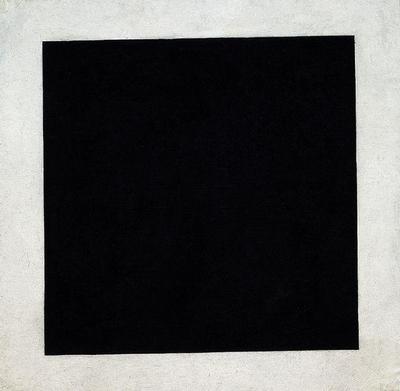
Academic Naturalism, Impressionist Naturalism, Cezanneism, Cubism, etc. - they are all to some extent nothing but dialectical methods, which in themselves in no way determine the intrinsic value of a work of Art.
Objective representation in itself (objective as the purpose of the image) is something that has nothing to do with Art, but the use of objective representation in a work of Art does not exclude its high artistic value. Therefore, for the Suprematist, the means of expression is always given, which, as far as possible, most fully expresses sensation as such and ignores the familiarity of objectivity. The objective in itself has no meaning for him; representations of consciousness - have no value.
Feeling is the most important thing... And thus Art comes to non-objective image to Suprematism.
* * *
So, from this brief reference, it can be seen that , and I called this output the dominant one, i.e. Suprematist. Art has gone to the desert, in which there is nothing but the feeling of the desert. The artist has freed himself from all ideas - images and representations and the objects that flow from them, and the entire structure of dialectical life.
Such is the philosophy of Suprematism, bringing Art to itself, i.e. Art as such, not considering the world, but feeling, not to the awareness and touch of the world, but to feeling and sensation.
The philosophy of Suprematism dares to think that Art, which until now has been at the service of formulating religious and state ideas, will be able to build the world of Art as a world of sensations and shape its production in those relations that will flow from its worldview.
Thus, on the pointless desert of Art will rise new world sensations, the world of Art, expressing all its sensations in the form of Art.
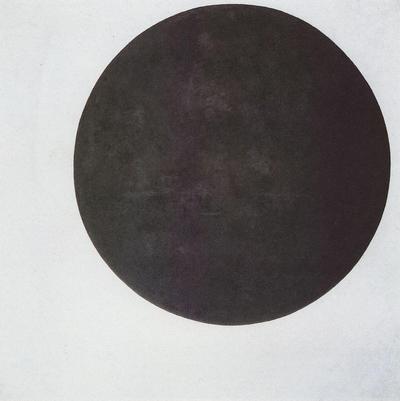
Moving in the general course of Art, freeing itself from objectivity as a world consciousness, in 1913 I came to the shape of a square, which was met with criticism as a feeling of a complete desert. Criticism, along with society, exclaimed: “Everything that we loved, everything has disappeared. Before us is a black square in a white frame. The society tried to find the words of the spell, together with criticism, in order to destroy the desert with them and to call up again on the square the images of those phenomena that restore the world, full of love of objective and spiritual relations.
And indeed, this moment of Art’s ascent higher and higher up the mountain becomes eerie with every step and at the same time light, objects went further and further, deeper and deeper in the blue distances the outlines of life were hidden, and the path of Art went higher and higher and ended only there, from where all the contours of things had already disappeared, all that they loved and what they lived, there were no images, no ideas, and instead a desert opened up in which the consciousness, subconsciousness and idea of space were lost. The desert was saturated with penetrating waves of pointless sensations.
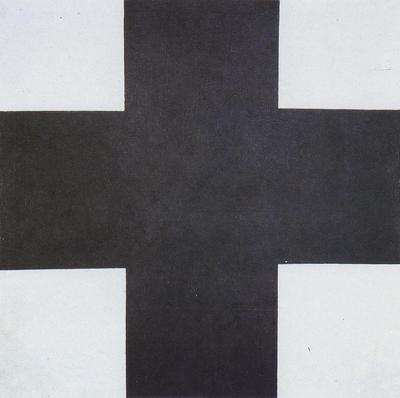
It was terrible for me to part with the figurative world, the will and the idea in which I lived and which I reproduced and took for the reality of being. But the feeling of lightness pulled me and brought me to a complete desert, which became ugly, but only a sensation, and this became my content.
But the desert only seemed like a desert to both society and criticism because they were accustomed to recognizing milk only in a bottle, and when Art showed sensations as such, naked, they were not recognized. But not a bare square in a white frame was exhibited by me, but only a feeling of the desert, and this was already the content. Art went up to the top of the mountain, so that objects gradually fell from it as false concepts of will and ideas from the image. Gone are the forms that we see, and in which the images of certain sensations are enclosed; in other words, they took a bottle of milk for an image of milk. Thus, Art took with it only the feeling of sensations in their pure primitive Suprematist beginning.
And perhaps, in the form of Art that I call Suprematist, Art came back to its primitive stage of pure sensation, which subsequently turned into a shell shell, behind which the very essence is not visible.
The shell on the sensations grew and hid in itself a being that neither awareness nor imagination can imagine. Hence it seems to me that Raphael, Rubens, Rembrandt, Titian and others are only that beautiful shell, that body, behind which the essence of the sensations of Art is not visible to society. And if these sensations were removed from the frames of the body, society would not recognize him. Therefore, society takes the image as an image of a hidden entity in it, which has nothing similar to the image. And the face of the hidden essence of sensations can be completely contradictory to the image, if, of course, it is completely faceless, shapeless, non-objective.
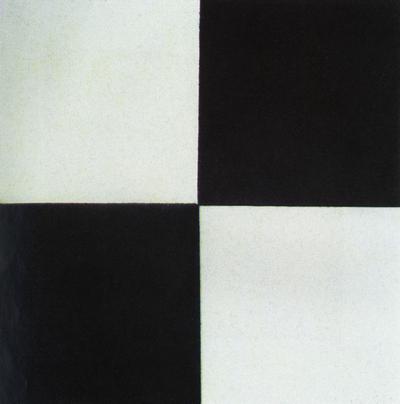
That is why the Suprematist square at one time seemed bare, for the shell was sleeping, the image was sleeping, painted in a multi-colored mother-of-pearl overflow of painting. That is why society, even now, is still convinced that Art is heading towards destruction, for it has lost its image, the one that was loved and lived by, it has lost its connection with life itself and has become an abstract phenomenon. He is no longer interested in either Religion, or the State, or the social side of life, he is not interested in what Art does, how society thinks. Art has departed from its source and therefore must perish.
But it's not. The non-objective-Suprematist art is full of sensations, and the feelings remained the same in the artist, which he also had in his life of object-figurative, ideological. The only question is that the non-objectivity of Art is the art of pure sensations, it is milk without a bottle, living on its own, in its own form, having its own life, and it does not depend on the shape of the bottle, which does not at all express its essence and taste sensations. .
Just as a dynamic sensation is not expressed by the form of a person. After all, if man expressed the full power of dynamic sensation, then there would be no need to build a machine; if he could express the feeling of speed, there would be no need to build a train.
Therefore, he expresses the feeling that exists in him in forms other than himself, and if an airplane appeared, then it appeared not because social conditions, economic, expedient, were the cause, but only because a sense of speed lived in it, movement, which was looking for an outlet in it and eventually took shape in the form of an airplane.
It's a different matter when this form was adapted to commercial economic affairs, and the same picture was obtained as with a picturesque feeling - behind the face of "Ivan Petrovich", or "State Leader", or "bagel merchant" the essence and reason for the origin of the species is not visible, because the “face of Ivan Petrovich” has become that shell with mother-of-pearl tints, behind which the essence of Art is not visible.
And Art became, as it were, a special method and technique for depicting the face of Ivan Petrovich. This is how airplanes became expedient objects.
In fact, there is no goal in either, for this or that phenomenon arises from this or that existence of sensation. An airplane is a cross between a cart and a steam locomotive, like a Demon between God and the Devil. Just as the Demon was not intended to tempt young nuns, as Lermontov intended it, so the airplane is not intended to carry letters or chocolate from place to place. An airplane is a sensation, but not an expedient postal thing. The work is a feeling, but not a canvas in which to wrap potatoes.
So, these or other sensations must find their way out and be expressed by a person only because the strength of the sensation that has entered is greater than a person is able to withstand, therefore only those constructions that we see in the whole life of sensations appear. If the human organism could not give vent to its sensations, then it would perish, because the sensation would unwind its entire nervous system.
Isn't this the cause of all the various types of life and at the same time the image of new forms, new methods for creating systems of certain sensations?
Suprematism is that new non-objective system of relations of elements through which sensations are expressed. The Suprematist square is the first element from which the Suprematist method was built.
Without them, i.e. Without faces and things, society says, Art doomed itself to complete non-existence.
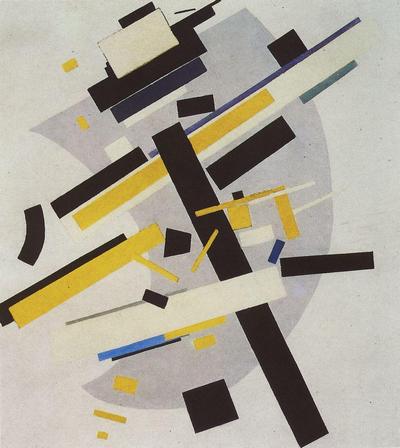
But it's not. Non-objective art is full of the same sensations and the same feelings that were in it earlier in the objective, figurative, ideological life, which was formed due to the need for ideas, that all sensations and representations were told by forms that were created by other reasons and for other purposes. So, for example, if a painter wanted to convey a mystical sensation or a dynamic one, then he expressed them through the form of a person or a machine.
In other words, to say, the painter told his feeling, showing one or another object that was completely not intended for this. Therefore, it seems to me that Art now finds its own language, its own form of expression, arising from this or that sensation, in a non-objective way.
The Suprematist square was the first element from which a new form of expression of sensations was built in Suprematism in general. And the square itself on white is a form arising from the feeling of the desert of nothingness.
So, these or other sensations must find their way out and be expressed in a form, according to their rhythm. This form will be the sign in which the sensation flows. This or that form will be conducive to the contact of sensation, realized through feeling.
The white-framed square was already the first form of non-objective sensation. The white fields are not the fields framing the black square, but only the feeling of the desert, the feeling of nothingness, in which the sight of a square shape is the first non-objective element of sensation. This is not the end of Art, as is still believed, but the beginning of the real essence. Society does not recognize this essence, just as it does not recognize the artist in the theater in the role of this or that face, for another face covers the real face of the artist.
But perhaps this example also points to the other side, because the artist is clothed in a different face, in a role, because Art has no face. And indeed, each artist in his role does not feel the face, but only the sensation of the represented face.
Suprematism is the end and the beginning when sensations become naked, when Art becomes as such, without a face. The Suprematist square is the same element as the line of primitive man, which, in its repetition, later expressed the sensations not of ornament, but only of rhythm.
The Suprematist square in its changes creates new types of elements and relationships between them, depending on certain sensations. Suprematism tries to understand the facelessness of the world and the pointlessness of Art. And this is equal to leaving the circle of efforts to comprehend the world, its ideas and touch.
The Suprematist square in the world of Art as an element of pure Art of sensation was not something new in its feeling. The ancient column, freed from the service of life, received its real essence, it became only a sensation of Art, it became Art as such, without object.
Life as a social relationship, like a homeless vagabond, enters any form of Art and makes it a living space. Convinced, in addition, that she was the cause of the emergence of this or that form of Art. After spending the night, she abandons this doss house as an unnecessary thing, but it turns out that after life freed Art, it became even more valuable, it is stored in museums no longer as an expedient thing, but as an objectless Art as such, because it never did not follow from a purposeful life.
The only difference between non-objective art and the past will be only that the latter became non-objective after passing life went into more profitable searches for economic conditions, while the square of Suprematism in particular and the non-objectivity of Art in general appeared ahead of the advancing life.

Objectless Art stands without windows and doors, like a spiritual sensation that does not seek for itself any good, nor expedient things, nor commercial benefits of ideas, neither good, nor "promised lands".
The art of Moses is the way, the purpose of which is to bring to the "promised land". Therefore, he still builds expedient objects and railway tracks, for the humanity brought out of "Egypt" is tired of walking. But humanity is already tired of traveling by train, now it is starting to learn to fly and is already rising high, but the “promised land” is not visible.
That is the only reason why Moses was never interested in Art and is not interested now, because first of all he wants to find the "promised land".
Therefore, only he banishes abstract phenomena and affirms concrete ones. Therefore, his life is not in a non-objective spirit, but only in mathematical calculations of profit. From here, Christ did not come to establish the expedient laws of Moses, as soon as to annul them, for he said: "The kingdom of heaven is within us." By this he said that there are no ways to the promised lands, and therefore there is no expedient railway, no one can even indicate that it is there or in another place, therefore, no one can lead the way to it. Thousands of years have already passed in the journey of man, but there is no “promised land”.
Despite all the already historical experience of finding the true path to the promised land and attempts to make an expedient object, society is still trying to find it, tightening its muscles more and more, raises the blade and seeks to break through all obstacles, but the blade only slipped in the air, because in space were not obstacles, but only hallucinations of representation.
Historical experience tells us that only Art was able to make phenomena that remain absolute, permanent. Everything has disappeared, only the monuments remain to live for centuries.
Hence, in Suprematism, the idea of revising life from the point of view of the perception of Art arises, the idea of opposing Art to objective life, utility, and expediency - aimlessness. This is the moment it starts strongest attack Moiseism on non-objective art, Moiseism that requires the immediate opening of a hole in supernatural architectonic sensations, because it requires rest after labor on expedient objects. He demands to take measurements from himself and arrange for him a lair, a cooperative tavern. Prepare more gasoline, oil for the further journey.
But the appetites of the locust are different from those of the bees, the dimensions of the Art are different from those of Mosesism, economic laws it cannot be the laws of Art, for sensations know no economy. Religious ancient temples are not beautiful because they were the lair of one or another form of life, but because their forms were formed from a sense of plastic relationships. Therefore, only they are vital even now, and therefore the forms of the social life that surrounded them are non-vital.
Until now, life has developed from two points of view for the good: the first is material, food-economic, the second is religious; there should have been a third point of view of Art, but the latter was considered by the first two points as an applied phenomenon, the forms of which follow from the first two. Economic life was not considered from the point of view of Art, for Art was not yet the sun in the warmth of which the eating life would blossom.
In fact, Art plays a huge role in the construction of life and leaves exceptionally beautiful forms for whole millennia. It has that ability, technique, which people cannot achieve in a purely material way of searching for a good land. Is it not surprising that with a bristle brush and a chisel the artist creates great things, creates what the technical sophistications of utilitarian mechanics cannot create.
People of the most utilitarian outlook still see in Art the apotheosis of the day—it is true that in this apotheosis stands “Ivan Petrovich”, the face of the personification of life, but nevertheless, with the help of Art, this face has become the apotheosis. Thus, pure Art is still covered by the face-mask of life, and therefore the form of life that could be unfolded from the point of view of Art is not visible.
It would seem that the whole mechanical utilitarian world should have a single goal - to free up time for a person for his main life - doing Art "as such", limiting the feeling of hunger in favor of feeling Art.
The tendency developing by people to construct purposeful and expedient things, striving to overcome the sensations of Art, should pay attention to the fact that, in fact, there are no things in a pure utilitarian form, more than ninety-five percent of things stem from the sensation of plasticity.
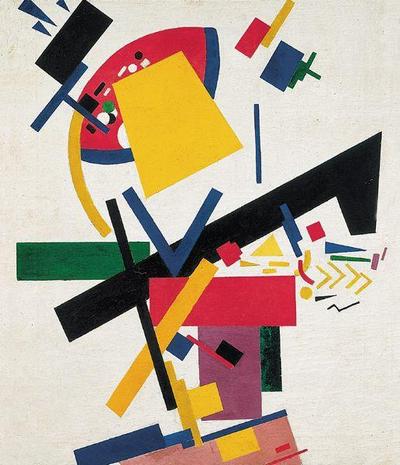
There is no need to look for convenient and expedient things, because historical experience has already proved that people have never been able to make such a thing: everything that is now collected in museums will prove that not a single thing is convenient and does not reach the goal. Otherwise, it would not have stood in museums, so if it seemed convenient before, it only seemed, and this is now proved by the fact that the collected things are inconvenient in everyday life, and our modern “useful things” only seem to us as such, tomorrow is will prove that they could not be comfortable. All the same, what is done by Art is beautiful, and this is confirmed by all the future; therefore, we have only Art.
Perhaps, due to its personal fear, Suprematism left objective life in order to reach the pinnacle of naked Art and look at life from its pure peak and refract it in the plastic sensation of Art. And indeed, not everything is so solid and not all phenomena are unshakably authentically established in it, so that it would be impossible to establish Art in its pure sensation.
I discovered a great struggle between sensations - the sensation of God fought with the sensation of the Devil, the sensation of hunger with the sensation of beauty, and so on. But, analyzing further, I learned that images and representations fought as reflexes of sensations, causing visions and concepts about the differences and advantages of sensations.
Thus, the sensation of God strove to overcome the sensation of the Devil and at the same time to conquer the body, i.e. all material care, urging people "not to collect gold for themselves on the earth." The destruction, therefore, of all riches, the destruction of even Art, which was only later used as a bait for people who were essentially rich, was the feeling of splendor in Art.
Religion “as production” and all industrial religious utensils, etc., arose out of the feeling of God.
Due to the feeling of hunger, factories, plants, bakeries and all economic food items were built. The body is sung. This feeling also calls on Art to attach itself to the forms of utilitarian objects, all for the same lure of people, because purely utilitarian things are not accepted by people, for this they are made from two sensations - “beautiful-utilitarian” (“pleasant with useful”, as society says). ). Even food - and that is served in artistic dishes, as if it is inedible in other dishes.
We see in life an interesting phenomenon that a materialist-atheist takes the religious side, and vice versa. The latter means its transition from one sensation to another or the disappearance of one of the sensations in it. I attribute the cause of this action to the influence of the reflexes of sensations, setting in motion "consciousness".
From here, our life is that radio station into which waves of different sensations fall and are realized in this or that kind of thing. Turning these waves on and off again depends on the feeling in whose hands the radio is located.
Not without interest is the situation that certain sensations squeeze through under the guise of Art. Atheists keep the icon in museums only because it has taken on the appearance of a sense of Art.
From this it can be seen that Art occupies the most important role in life, but nevertheless does not occupy the main starting point from which it was possible to look at bread with different eyes.
We cannot say that life exists only in this or that sensation, or that this or that sensation is the main base of all the others, or that everything else is intoxication and deceit. Life is a theater of images of sensations, in one case, and in another - pure sensations, non-objective, non-imaginative, non-ideological.
Aren't all people artists who strive to represent certain sensations in images? Isn't the spiritual Patriarch an artist in vestments when expressing a religious feeling? A general, an army man, an accountant, a clerk, a hammer fighter - aren't these roles in these or other plays that they play and go into ecstasy, as if such plays really exist in the world?
In this eternal theater of life, we have never yet seen the true face of a person, because whoever you ask who he is, he will say: “I am an artist of this or that theater of sensations, I am a merchant, accountant, officer,” and such accuracy is even written in the passport and the name and patronymic and surname of the person are accurately written out, which should convince anyone that this person is really not Ivan, but Casimir.
We ourselves are a mystery that hides the human image. Suprematist philosophy is also skeptical about this mystery, for it doubts whether there is in reality an image or a human face that the mystery would need to hide.
Not a single work depicting a face depicts a person, it depicts only a mask through which this or that imageless sensation flows, and what we call a man will tomorrow be a beast, and the day after tomorrow an angel - it will depend on whether or not another being of sensation.
Artists, perhaps, hold on to the human face, because they see in it the best mask through which they can express certain sensations.
The New Art, like Suprematism, turned off the face of a person, just as the Chinese turned off the figurative from the alphabet, establishing a different sign for the transmission of certain sensations. Because one feels in the latter an exceptionally pure sensation. Thus, a sign expressing this or that sensation is not an image of sensation. A button that passes a current is not an image of the current. The picture is not a real depiction of a face, for there is no such face.
Hence the philosophy of Suprematism does not consider the world, does not touch it, does not see it, but only feels it.
* * *
So, on the borderline of the 19th-20th century, Art came to itself - to a pure expression of sensation, throwing off other sensations of religious and social ideas imposed on it. It puts itself on a par with other sensations. Therefore, each form of it has only the last basis as its source. And from this basis all life can be considered.
The built temple is not built otherwise, but only in this way; each thing in it is not a thing, as it is understood in utilitarian-religious sensation, but only a composition of plastic sensation, despite the fact that it consists of two sensations, God and Art, i.e. from a coming idea and a constant feeling of the unchanging. Such a temple is only eternal in its form, because in it there is a composition of an unchanging sense of Art. It is a monument of Art, but not of a religious form, for we do not even know it.
“Utilitarian” things would not have been preserved in museums if the artist’s hand had not touched them, passing a sense of Art between them and man. This also proves that their sense of utilitarianism is accidental, it has never been significant.
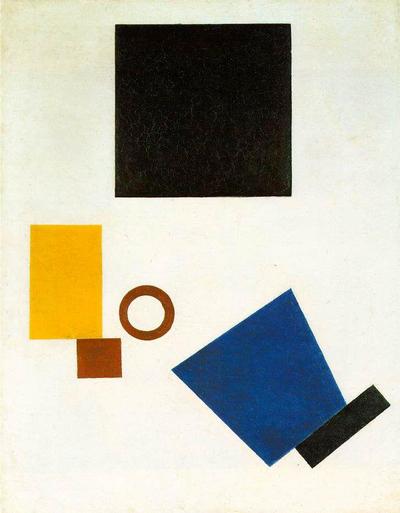
Things created apart from the feeling of Art do not carry an absolute, immutable element. Such things are not preserved in museums, but betrayed to their time, and if they are preserved, they are preserved as a fact of human thoughtlessness. Such a thing is an object, i.e. instability, temporality, while artistic things are pointless, the so-called. stable, unchanged. It seems to society that the artist does unnecessary things, it turns out that his unnecessary thing exists for centuries, and the necessary thing - one day.
This implies the idea that if society aims to achieve such a composition of human life that “peace and good will” come, then this composition must be built so that it cannot change, because if at least one element changes its position, then its change will result in a violation of the established composition.
We see that the artist's sense of Art sets the composition of the elements in a relation that becomes permanent. Therefore, they can build an unchanging world. Museums, which already contain "unnecessary" things, can confirm this - the unnecessary turned out to be more important than the necessary things.
Society does not notice this, does not notice that behind the necessary things it looks through the real things; also, for the same reason, it cannot build the World among itself - non-peaceful things close the World, the invaluable obscures the valuable.
Thus, the things of art that are in life are of little value, obviously because they carry a lot of unnecessary, worldly, everyday things. But when they are freed from the unnecessary, i.e. an outsider, then they acquire great value and are stored in special rooms called museums. The latter proves that the utilitarianism imposed on Art only devalues it.
Is it now possible to evaluate Art from the point of view of the feeling of hunger, i.e. its utilitarian constructiveness, and " the right life» take for the measurement of "unnecessary", i.e. Arts? It seems to me that it is impossible. This leads to the most absurd result and an estimate of the latter. Hunger is only one of the sensations and cannot be measured in terms of other sensations.
* * *
The sensation that requires you to sit down, lie down, stand is, first of all, a plastic sensation that evokes the corresponding plastic forms, therefore the chair, and the bed, and the table are not utilitarian phenomena, but only plastic ones, otherwise the artist cannot feel them. So if we say that all objects in their form follow from the feeling of hunger (utility), then this is not true; you need to analyze them carefully to be sure of this.
We, generally speaking, do not know utilitarian objects, because if they were known, then, obviously, they would have been built long ago, and it is obvious that we will not have to recognize them; maybe we only feel them, and since sensation is both non-figurative and non-objective, it is impossible to see an object in it, therefore an attempt to imagine to overcome the sensation by “knowledge” gives the sum of unnecessary utilitarian objects.
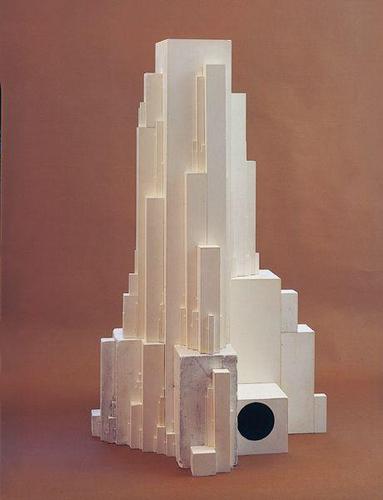
Along with this, the plastic works of artists are known to them, and only because of this they can make them. The work made by them remains for us forever a work that satisfies our sense of beauty. The artist is therefore a good conductor of sensation.
Every thing arising from social conditions, is temporal, and the works emanating from the sensation of Art are timeless. If, however, social elements that have acquired a plastic sensation are included in the work, then in the near future, with the slightest change in social conditions, they lose their strength, fall out of order - only plastic sensations remain, which are unchanged in all changes in social life.
* * *
The Modern New Art of the pictorial sense gave shape to the new architecture; the new element, which was called the Suprematist, became an architectural element. This element in no way derived from this or that social structure of life. This phenomenon of New Art is not even recognizable either by the bourgeois structure of life, or by the socialist, Bolshevik one; the first believe that the New Art is Bolshevik, and the second that it is bourgeois (see the newspaper of April 2, 1927 - article "Kathedrall sozialistische", "Leningradskaya Pravda" for 1926, May).
Social conditions stem from the feeling of hunger, they can only give appropriate things, they do not seek plastic norms, but purely material ones. They cannot create art, just as ants cannot produce honey. Therefore, there are artists who, in fact, create the values of the state.
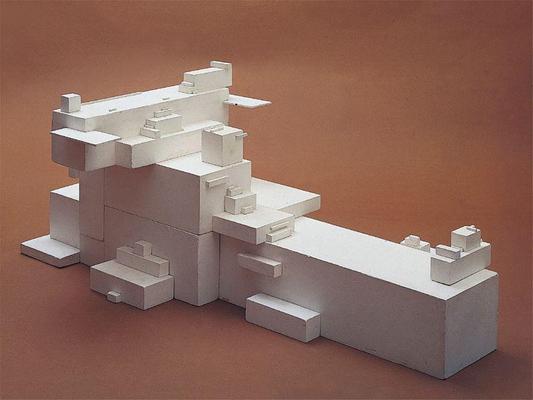
The New Art is a vivid proof that it is the result of a plastic sensation, there are no signs of a social order in it, and therefore it seems unnecessary to socialists, because they do not see a social structure in it, they do not see in it either images of political or agitational moments, although the latter does not rule out the possibility that an artist may also be a socialist, an anarchist, and so on.
* * *
At the present time, Art has come, as I said, to itself in order to build its own world, arising from the plastic sensation of Art. This aspiration led to the fact that objects disappeared in it, the images of the phenomena around us and social conditions disappeared.
Thus, it has lost the ability or function to represent life; for this, each of these artists is cruelly paid by the masters of life, who cannot exploit him in any way for their own benefit.
But such phenomena in the history of Art are not something new. Art has always built its own world, and in the fact that other ideas found a home in its world, it is innocent, a hollow in a tree was not at all intended for a bird's nest, and the created temple was not at all intended for the dwelling of a religious idea, for it is, first of all, a temple of Art , which still remains a temple, just like a hollow remains a hollow first of all, but not a nest.
And so now we are facing a new fact, when the New Art begins to build its own plastic world of sensations - it transfers from a project drawn on canvas to the construction of these relationships in space.
Die Gegenstandslose Welt (Bauhausbucher, 11). Munich, 1927.
The heirs of Malevich, who received five paintings by the artist from the Stedelijk Museum in Amsterdam and one each from the Museum contemporary art in New York and Harvard University in Boston, all (or almost all?) of them sold out in one way or another (and, understandably, they are the top 10 works by Malevich sold at auctions). Now the probability of appearance at the open auction of paintings by the artist is close to zero. Or is it still not? "Artguide" offers to follow the fate of the most expensive works of the author of "Black Square".
1. Suprematist composition. 1916. Oil on canvas. 88.5 x 71. Sold at Sotheby's, New York, November 3, 2008 for $60 million

Put up for auction by the artist's heirs. The painting was exhibited in 1927 at the Berlin exhibition Große Berliner Kunstausstellung, which took place from May 7 to September 30, 1927. Malevich arrived in Berlin on April 29, and his exposition as part of the exhibition opened on May 14. But already on June 5, the artist was forced to return to the USSR (Soviet officials did not extend his foreign visa), leaving all the works placed at the exhibition (about seventy) in the care of the German architect Hugo Hering and hoping to return for them next year, but he did not go abroad no more released. Shortly before his death, Hering transferred the works he kept to the Amsterdam City Museum (Stedelijk Museum) with the condition of annual payments of certain amounts for 12 years, but after Hering's death, his heirs immediately received the entire amount (although there are no documents confirming this), and the Suprematist composition”, among other works by Malevich, entered the Stedelijk collection.
From the 1970s, Malevich's heirs tried to get these paintings returned, but without success, until in 2002, 14 works from the Stedelijk collection were taken to Malevich's exhibition “Kazimir Malevich. Suprematism" to the Guggenheim Museum. Some of the heirs, being US citizens, filed a lawsuit in the US against the Dutch museum, and Stedelijk preferred an out-of-court agreement, returning five of the thirty-six paintings stored in the museum (including the Suprematist Composition) to them in exchange for waiving further claims . This canvas is still the most expensive painting by a Russian artist ever sold at auction.
2. Mystical Suprematism (Black cross on a red oval). 1920-1922. Canvas, oil. 100.2 x 59.2. Sold at Sotheby's, New York, November 5, 2015 for $37.77 million
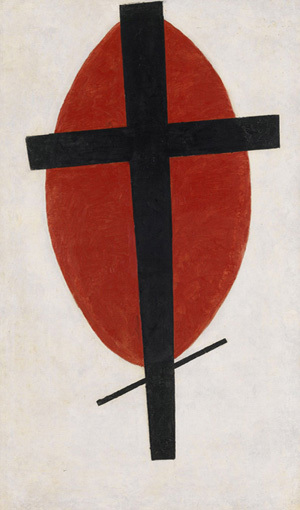
The “Black Cross on a Red Oval” repeats the fate of the “Suprematist Construction” - this is one of the five paintings returned to the heirs from Stedelijk.
3. Suprematism. 18th design. 1915. Oil on canvas. 53.3 x 53.3. Sold at Sotheby's London on 24 June 2015 for £21.43m ($33.76m)
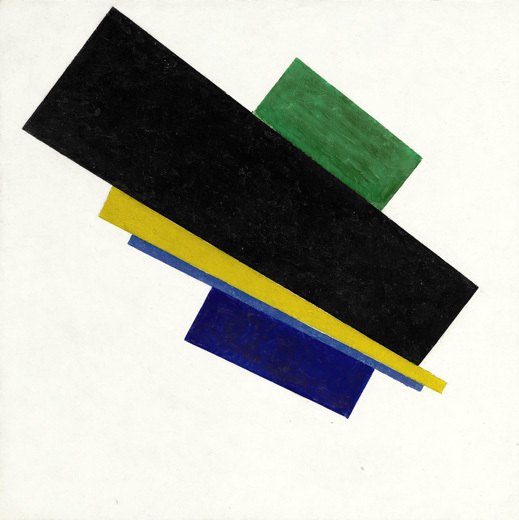
The same story as in the previous two cases. The fate of the remaining two canvases, handed over to the heirs from Stedelijk, is as follows: the painting “Suprematism: the pictorial realism of a football player. Masses of Color in the Fourth Dimension (1915) was sold in 2011 to the Art Institute, Chicago for an undisclosed sum, while Desk and Room (1913) featured in Malevich's last exhibition at the Tate Modern (July 16 - October 26, 2014). ) as "provided anonymously" (not even the traditional "private collection" in the case of those collectors who wish to remain anonymous). What this means remains a mystery.
4. Suprematist composition. 1919-1920. Canvas, oil. 80.5 x 80.5. Sold at Phillips on May 11, 2000 for $17 million
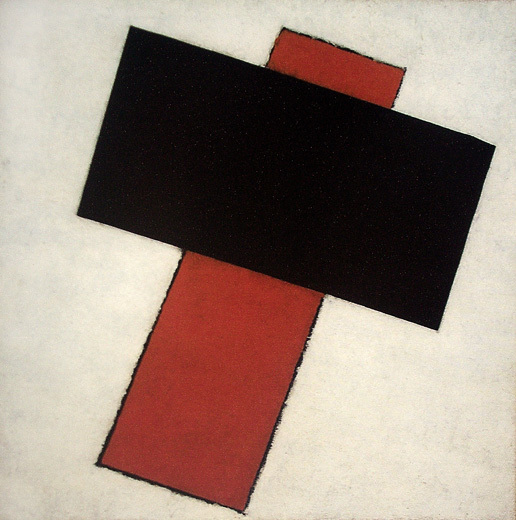
Like the previous ones, this painting was exhibited at the Berlin exhibition Große Berliner Kunstausstellung in 1927 and remained in Germany after the artist left for the USSR. In 1935, the then director of the Museum of Modern Art in New York, Alfred Barr, took The Suprematist Composition and twenty other works to New York for the Cubism and Abstract Art exhibition. By that time, the Nazis were already in power in Germany, and Malevich's "degenerate art" had to be hidden. The director of the Provinzialmuseum Alexander Dorner hid it in his basement in Hannover, who secretly gave them to Barr. Barr also smuggled them out, and then simply left them in MoMA, where many of them are still. In 1999, by agreement with Malevich's heirs, the museum returned to them the "Suprematist Composition" and several graphic works.
5. Self-portrait. 1909-1910. Paper, gouache, watercolor, pencil. Diameter 25.1. Sold at Sotheby's London on February 3, 2015 for £5.75 million ($8.66 million, a record for Malevich's graphics)

This is one of three self-portraits created by Malevich between 1908 and 1911 (the other two are kept in the Tretyakov Gallery and the Russian Museum). It comes from the collection of George Costakis, who sold it in 1962. On February 5, 2004, it was already sold at Christie's in London, and then its sale price was £162,000, that is, in eleven years, the cost of Self-Portrait has increased by more than 35 times.
6. Head of a peasant. Around 1911. Paper on cardboard, gouache, charcoal. 46 x 46. Sold at Sotheby's, London, June 2, 2014 for £2.1 million ($3.5 million)
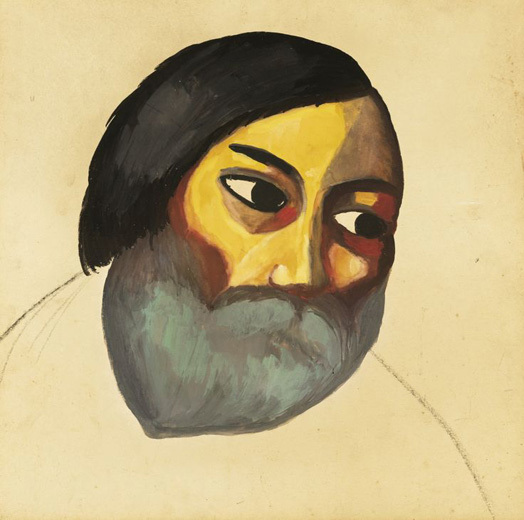
This work was exhibited at the Donkey's Tail exhibition organized by Mikhail Larionov and Natalia Goncharova in 1912, and also participated in the Berlin exhibition of 1927, during which the artist presented it to Hugo Hering. Then she inherited passed to his wife and daughter. In 1975, the "Peasant's Head" was sold through the Gmurzynska Gallery in Cologne to the father of the owners, who put it up for auction at Sotheby's.
7. Suprematist figure. 1931-1932. Canvas, oil. 71 x 44.5. Sold at Bonhams, London, June 21, 2004 for £780,000 ($1.43 million)
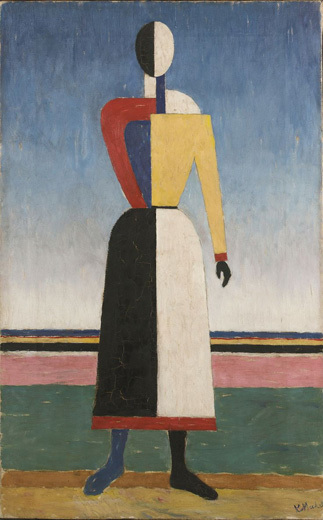
It belonged to the artist's family, then to the collector Solomon Schuster, from whom it was acquired in the 1960s.
8. Landscape with two figures. 1931. Oil on canvas. 48 x 58.5. Sold at Christie's London on June 30, 1999 for £460,000 ($724,000)
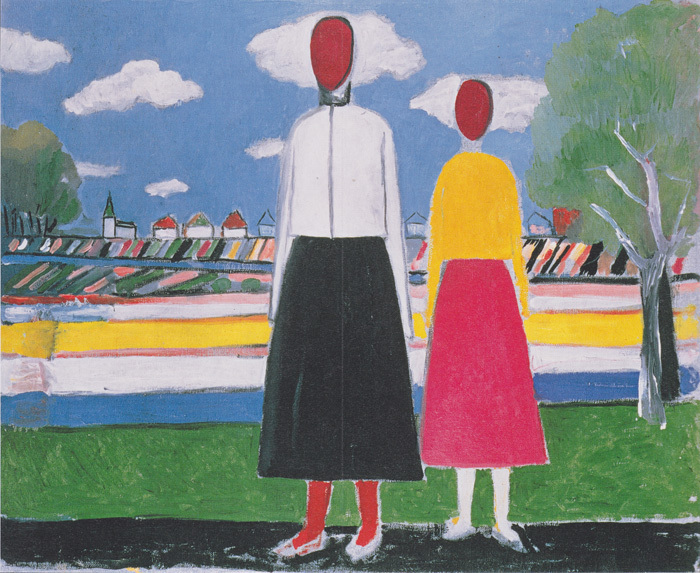
Belonged to Malevich's student Anna Leporskaya, from whom she inherited her stepdaughter Nina Suetina. Sold to auctioned owner through Gmurzynska Gallery, Cologne.
9. Head of a peasant. 1910. Cardboard, gouache. 46 x 46. Sold at Sotheby's, London, June 22, 1993 for £230,000 ($342,200)
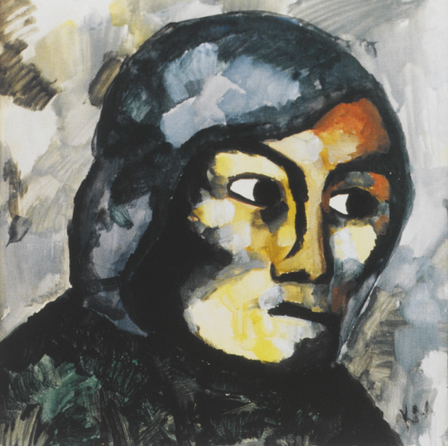
Although this “Head of a Peasant” does not have such an impressive provenance as in previous cases, it does have a rich exhibition history: it featured in the retrospective “Kazimir Malevich. His Path from Impressionism to Suprematism”, held in 1919-1920 as part of the XVI State Exhibition in Moscow, was at the same exhibition in Berlin in 1927 as the first four most expensive works of the artist, and therefore held the auction record for a long time for the graphic works of Malevich, who was beaten only last year by another "Head of a Peasant" (No. 6 on our list).
10. Suprematism. 34 drawings. Univis, Vitebsk, 1920. Lithographed edition. 22 x 18. Sold at Sotheby's, London, June 25, 1997 for £91,000 ($151.6)

A complete book with 34 lithographs, a cover and four pages of the artist's facsimile handwritten text, hand-printed (with the participation of El Lissitzky) in the Unovis lithographic workshop (all 34 drawings can be seen in detail, for example). It is not known exactly how many copies of the book were printed - presumably about a hundred.
Prices are subject to buyer's premium, the price in brackets in dollars is given at the time of the sale of the work. Artguide thanks Margarita Danshina, Sotheby's specialist, for her help in preparing the material.
This is a blue rectangle, located on top of the red beam. The composition was written by Malevich in 1916. This is one of the rarest and most expensive works in the history of Russian art.
Through his paintings, Malevich had a powerful influence on the ideology of art throughout the world. The rectangles in the picture are dynamic and bright, and in the middle of the composition there is a small blue square. This picture was painted in the interval between the Black Square and White Suprematism.
Suprematism was founded by Malevich himself, with this the artist gave definitions to abstract compositions. The word suprematism means a certain superiority and domination.
Suprematism consists in ignoring the reality of the image. This is a protest against all naturalism in painting and art. That is, the composition is reduced to a few simple figures that have their own symbolic meaning. Geometric images seem to plunge into the space of the white abyss, and dominate it over the laws of statics and dynamics.






